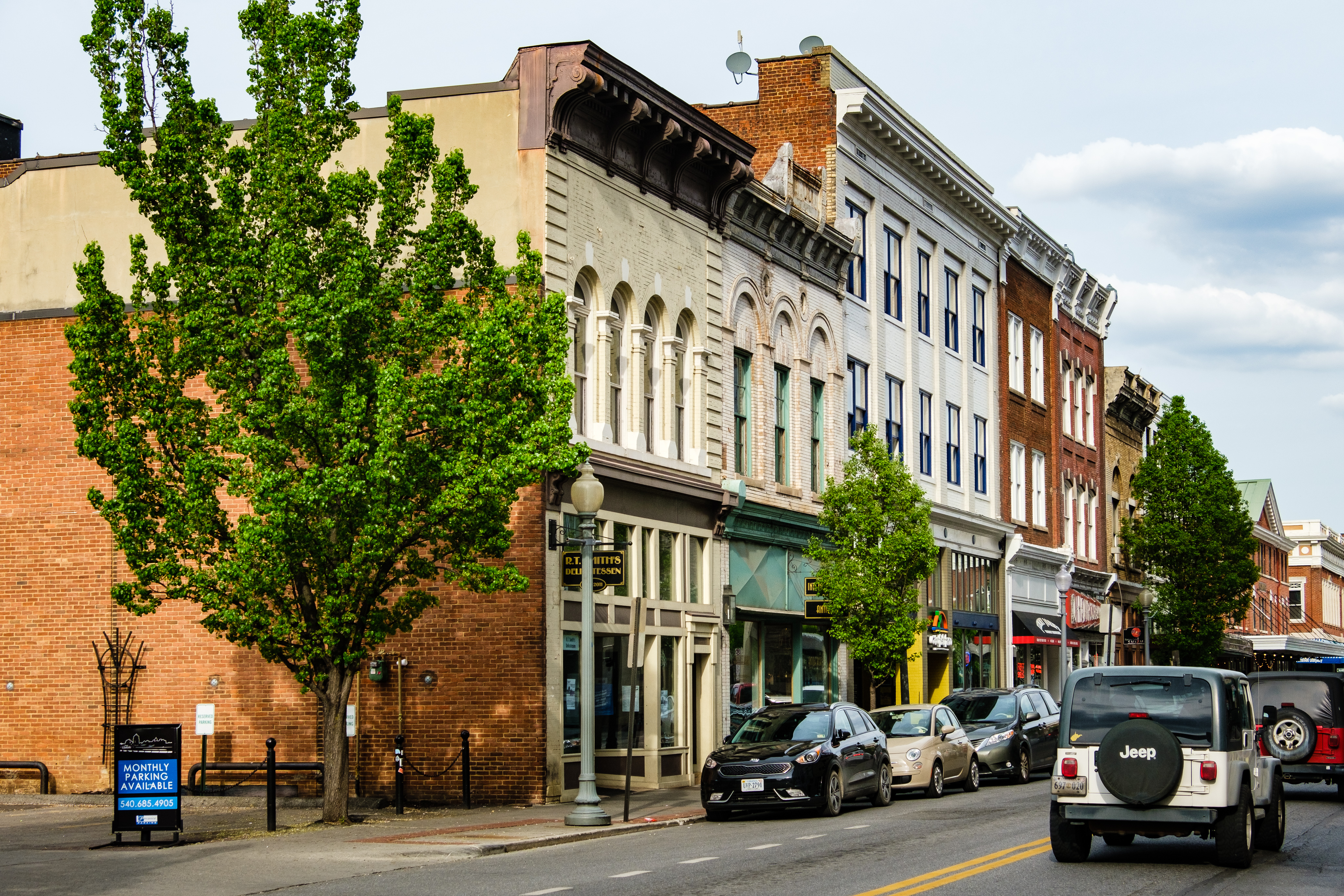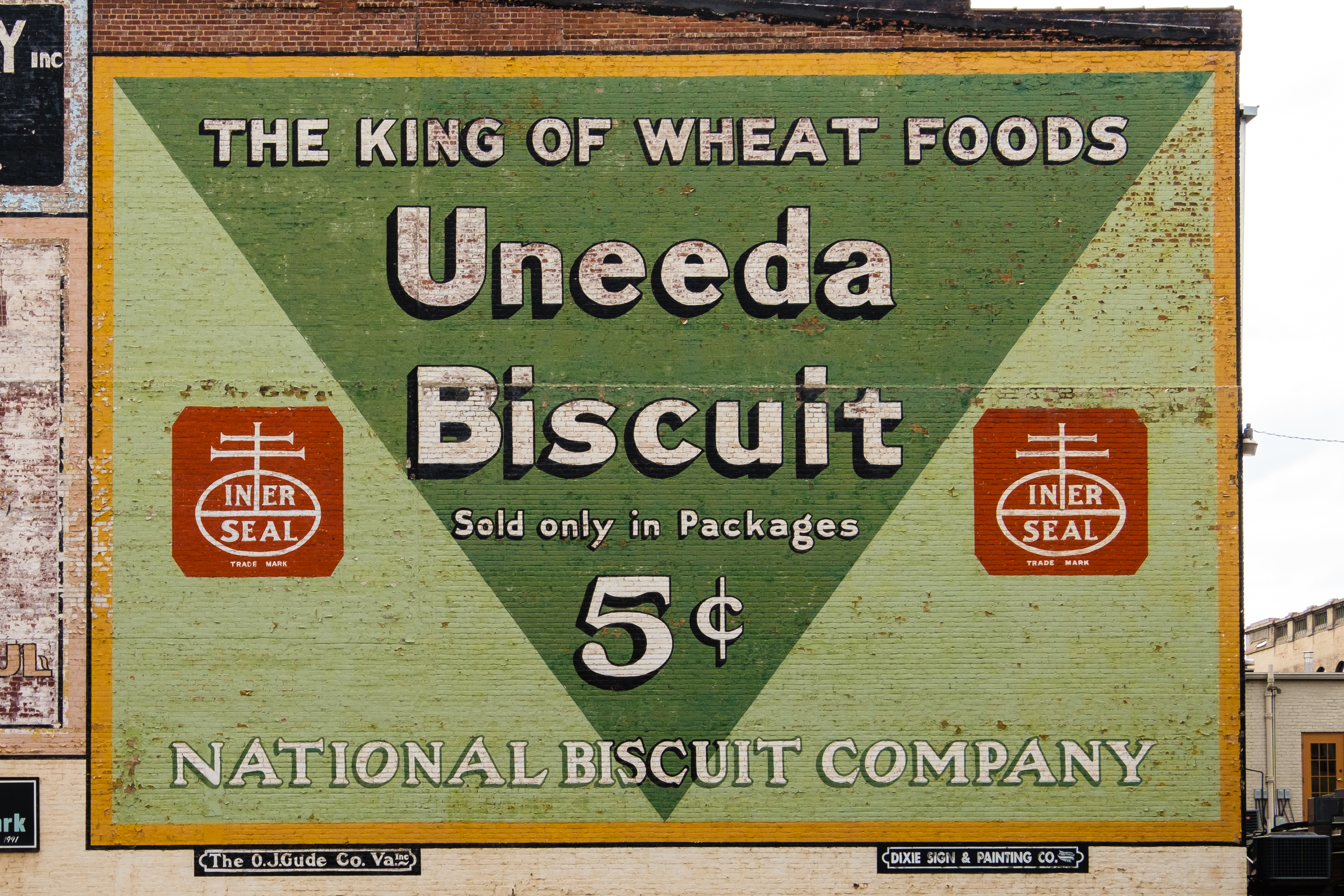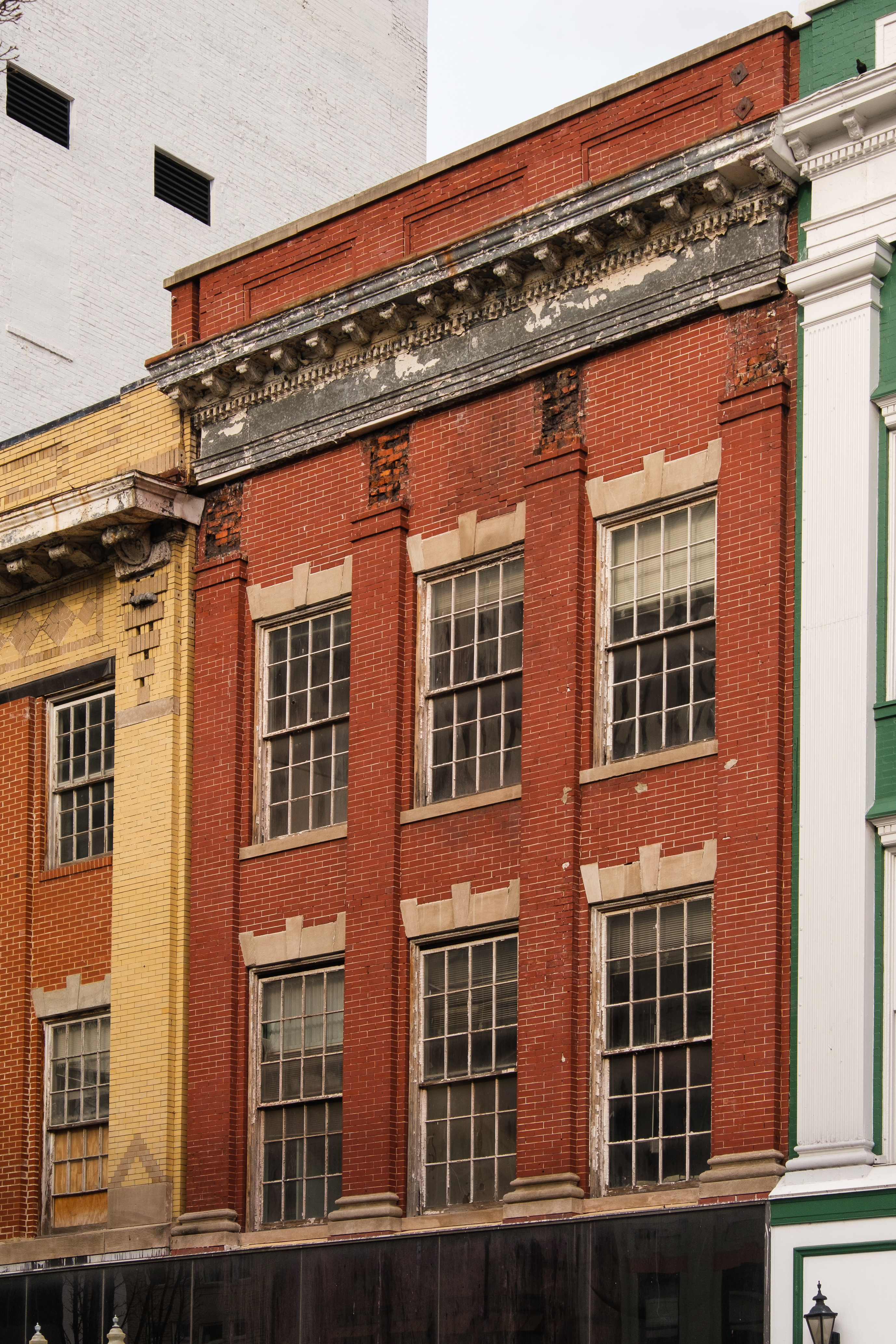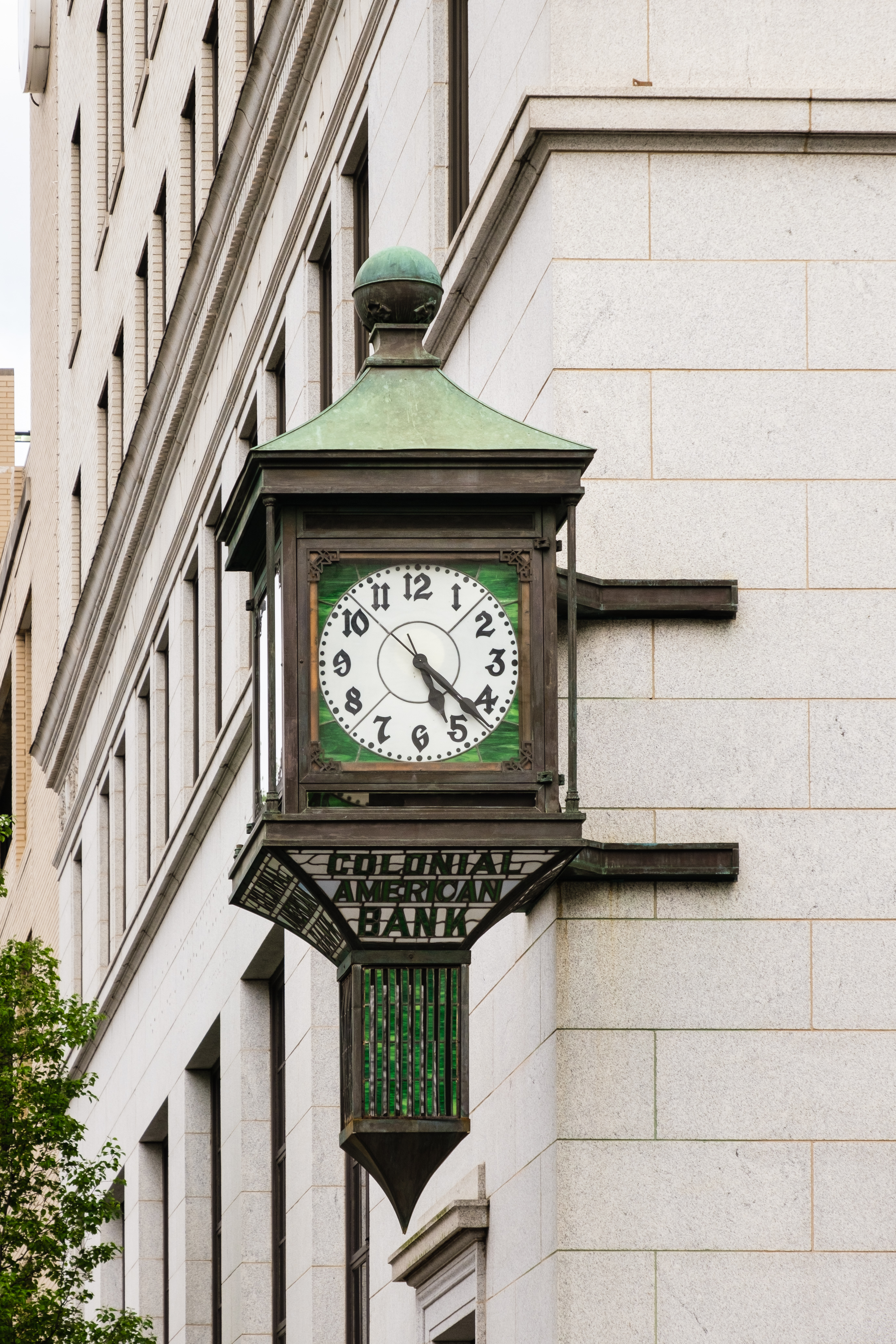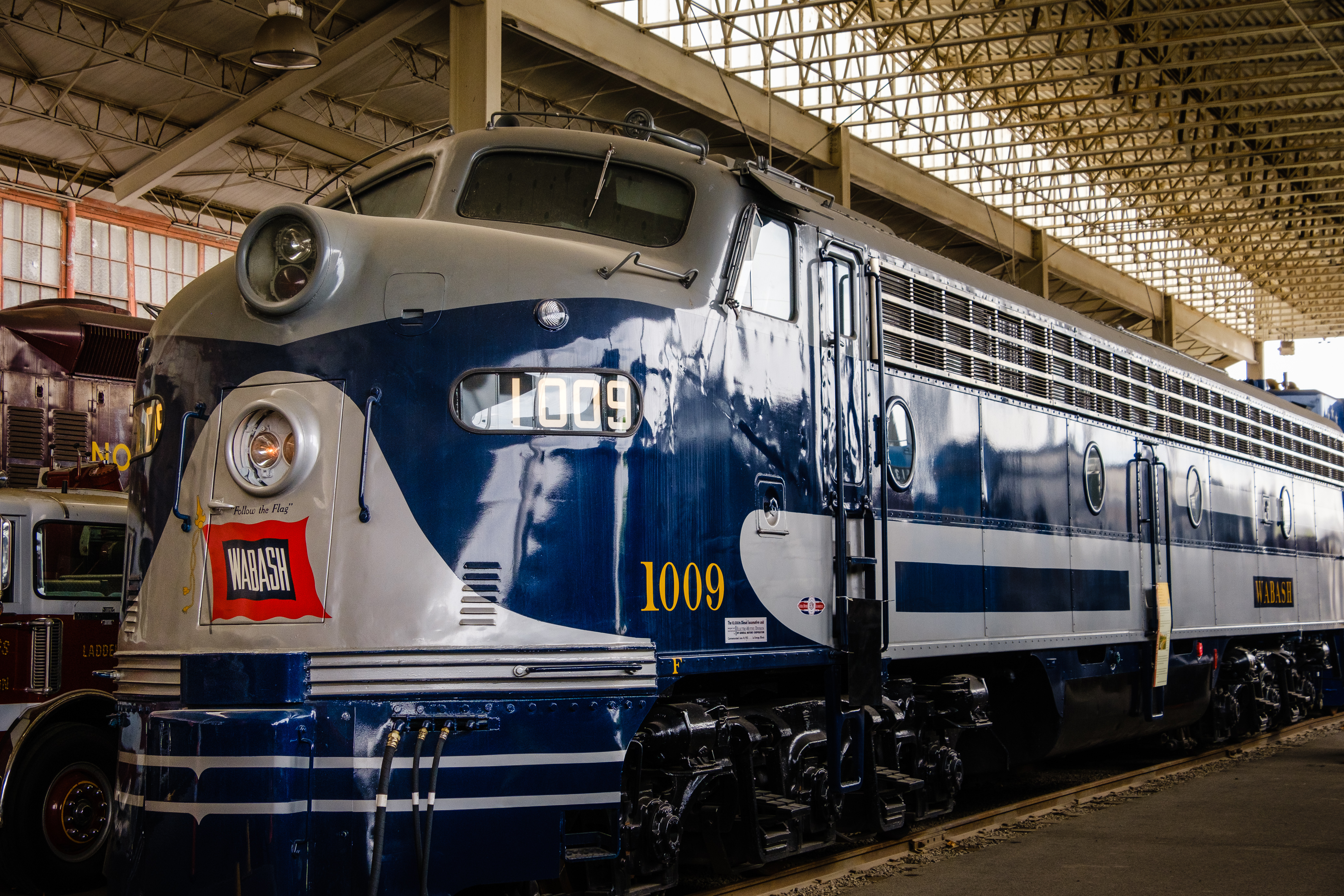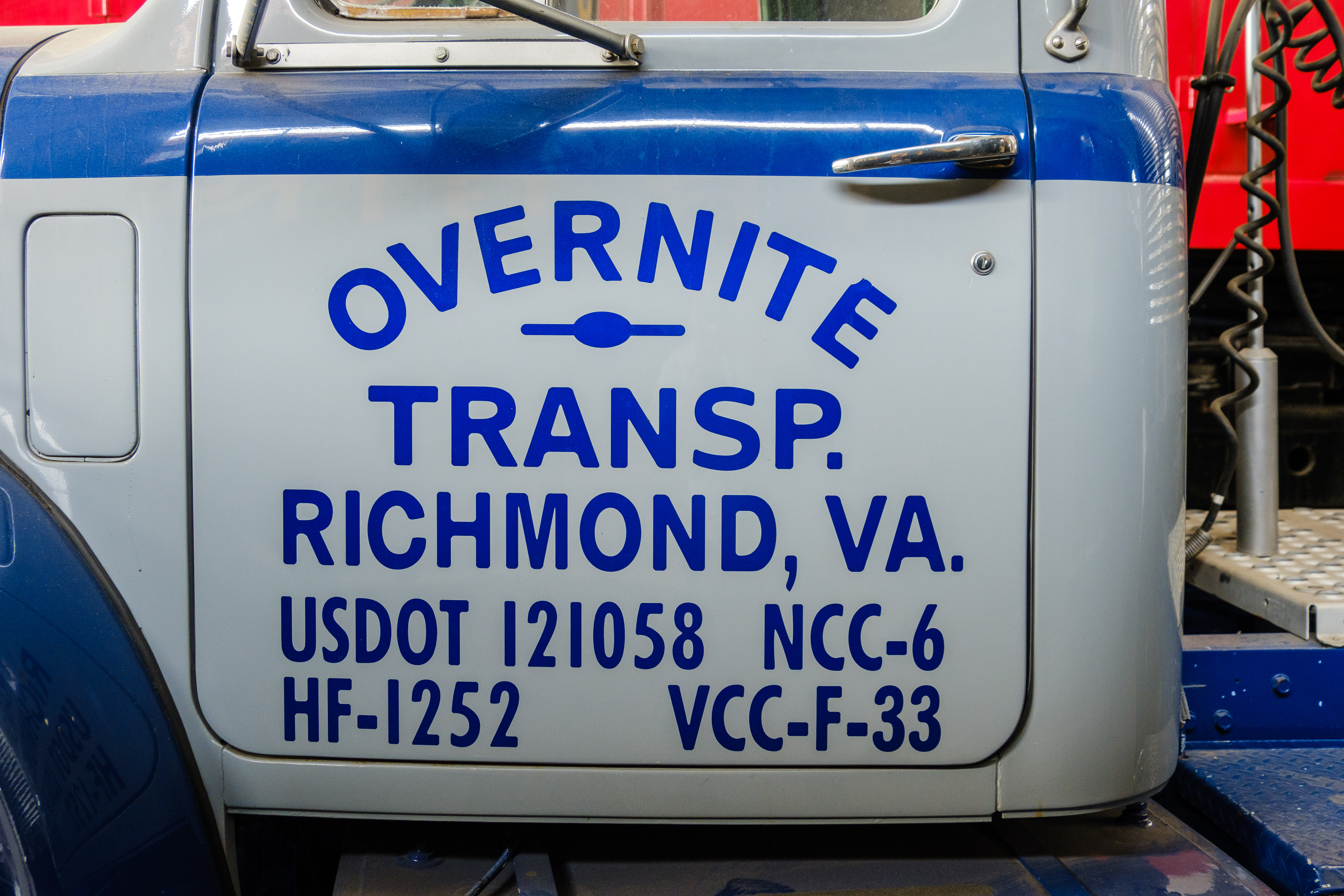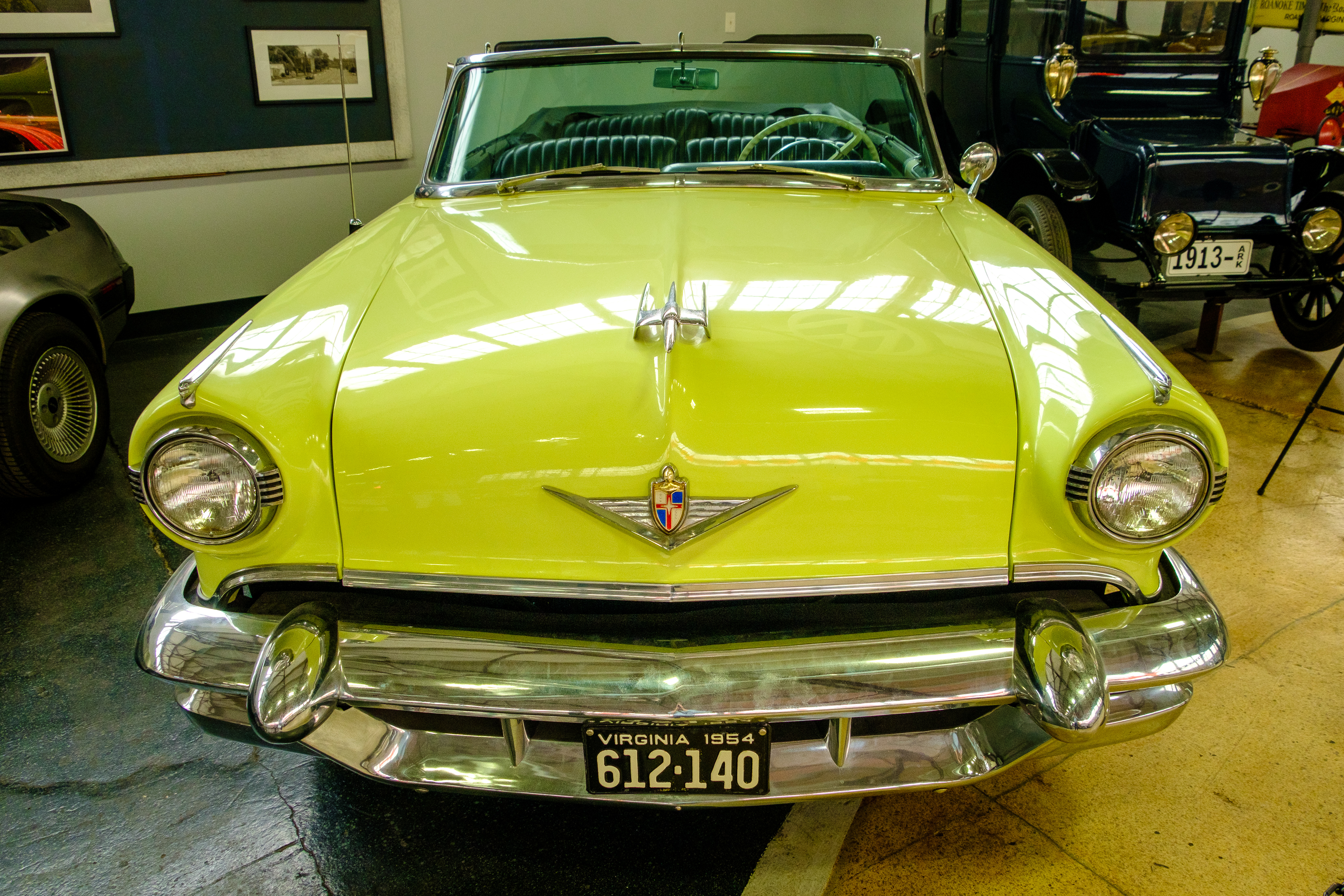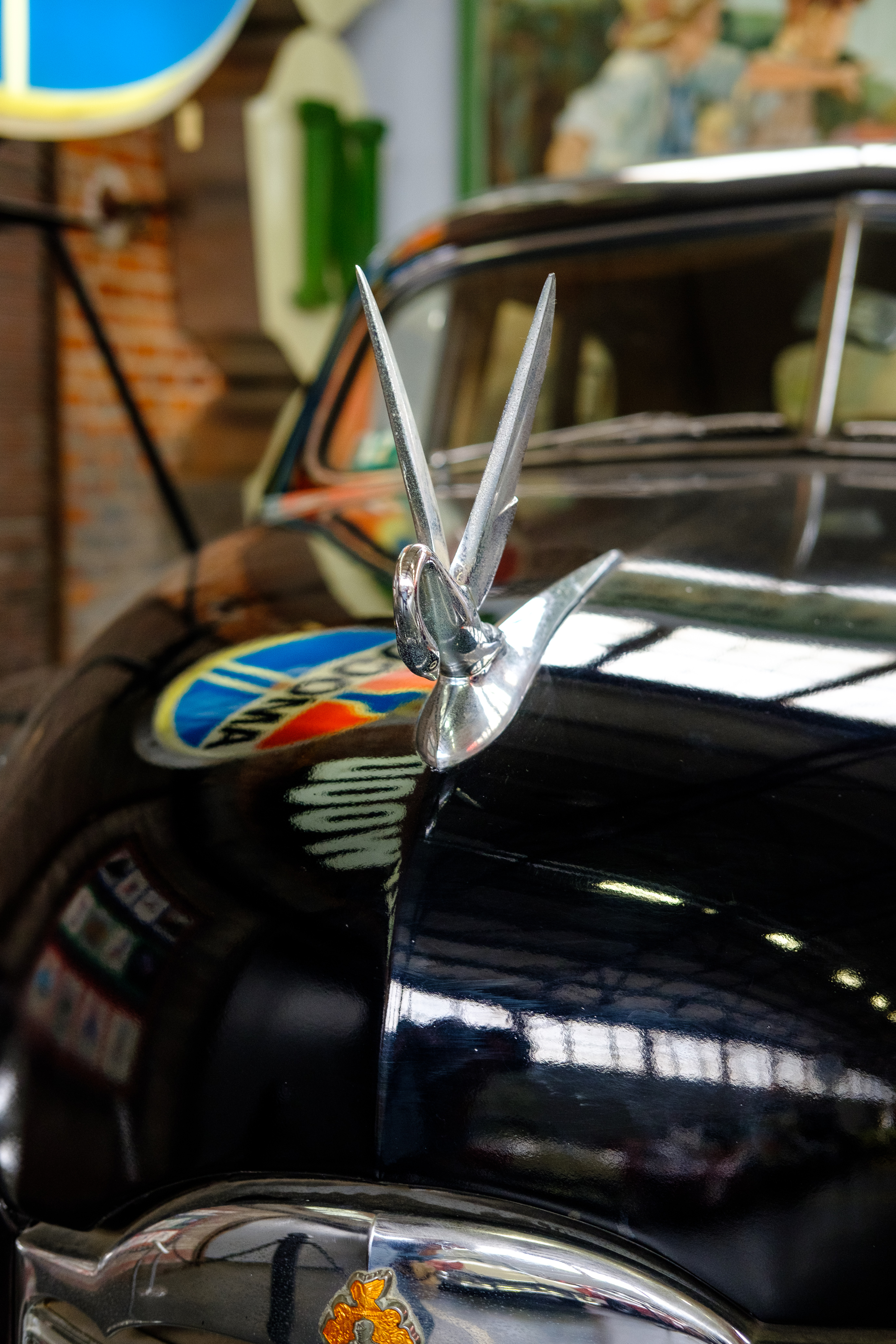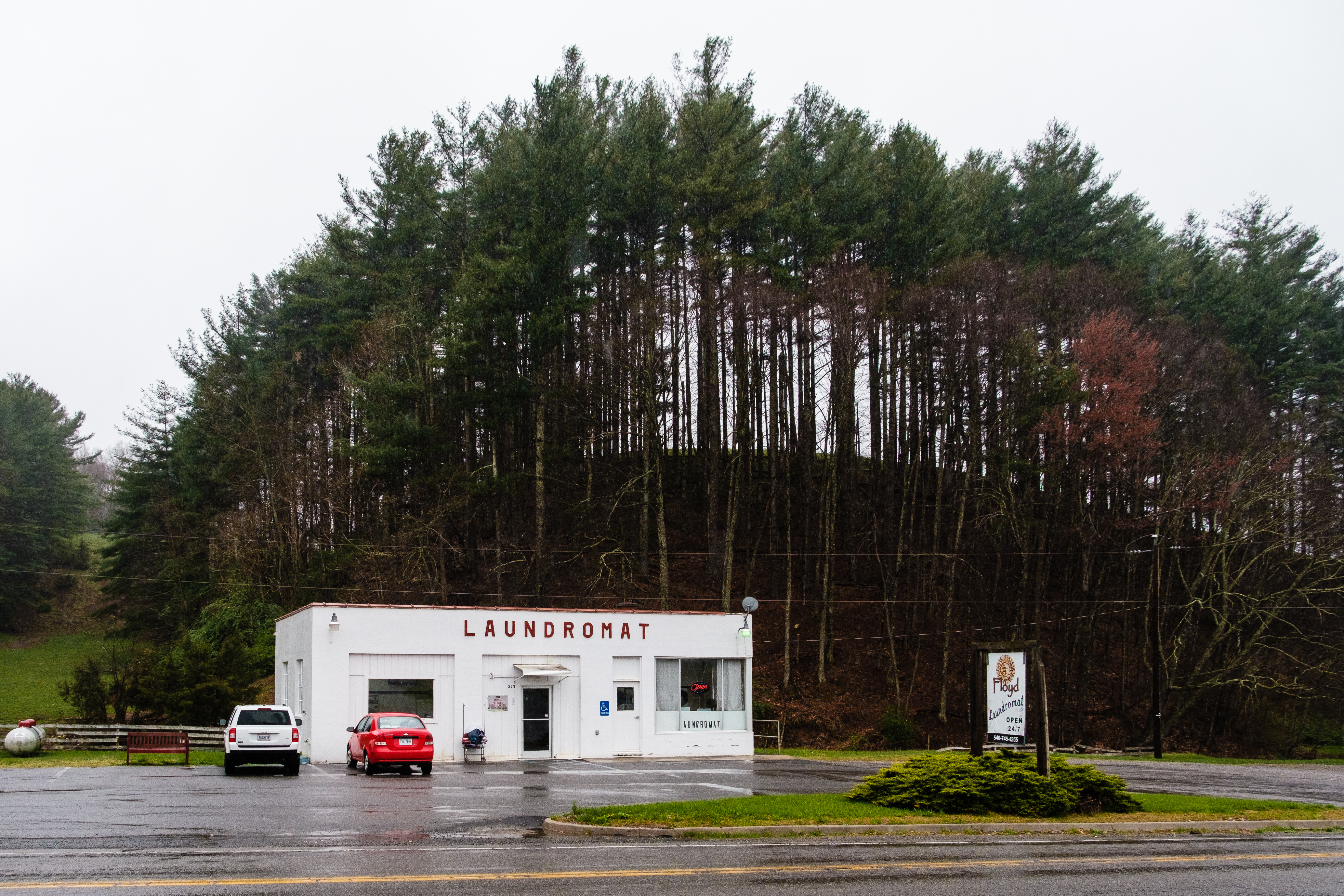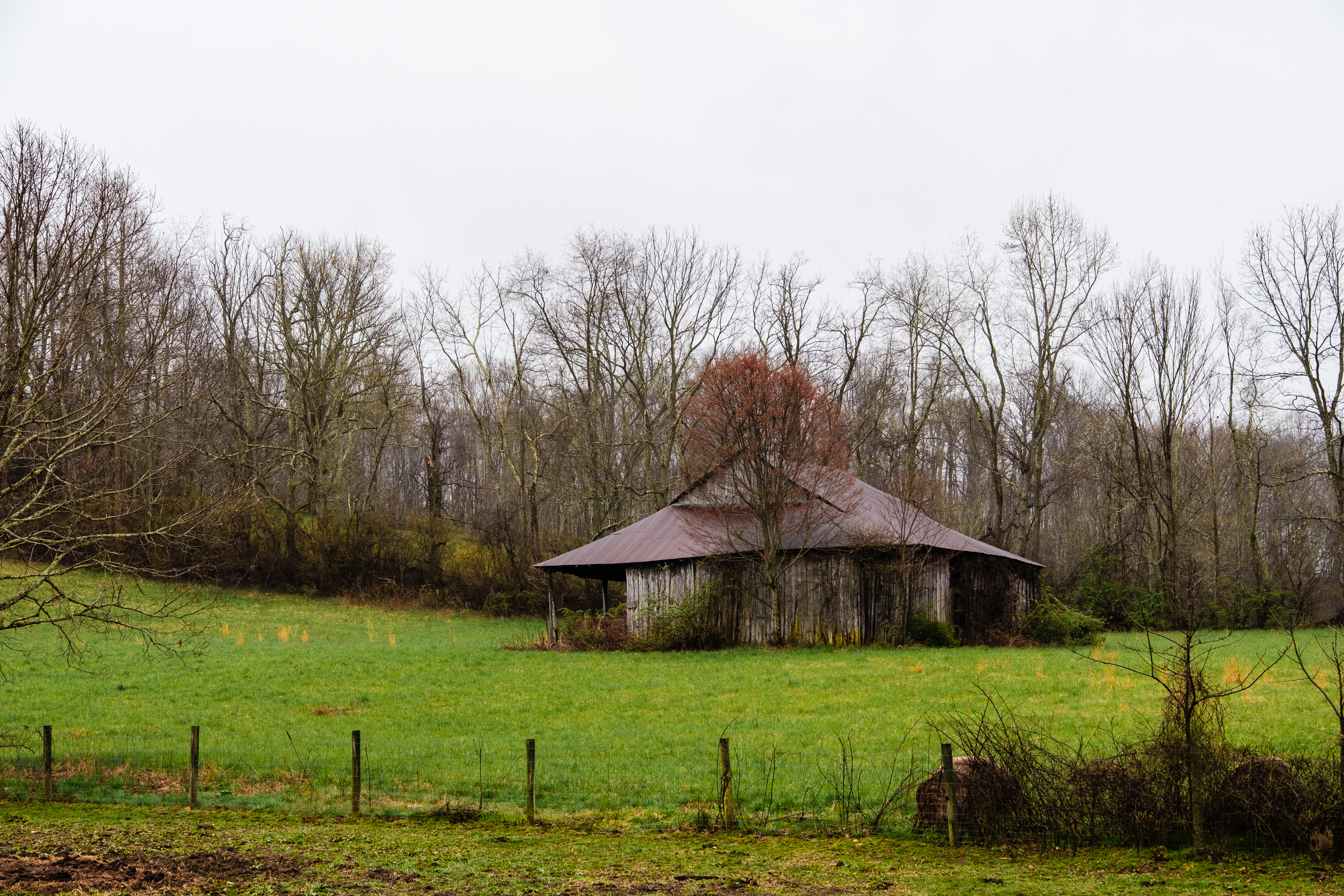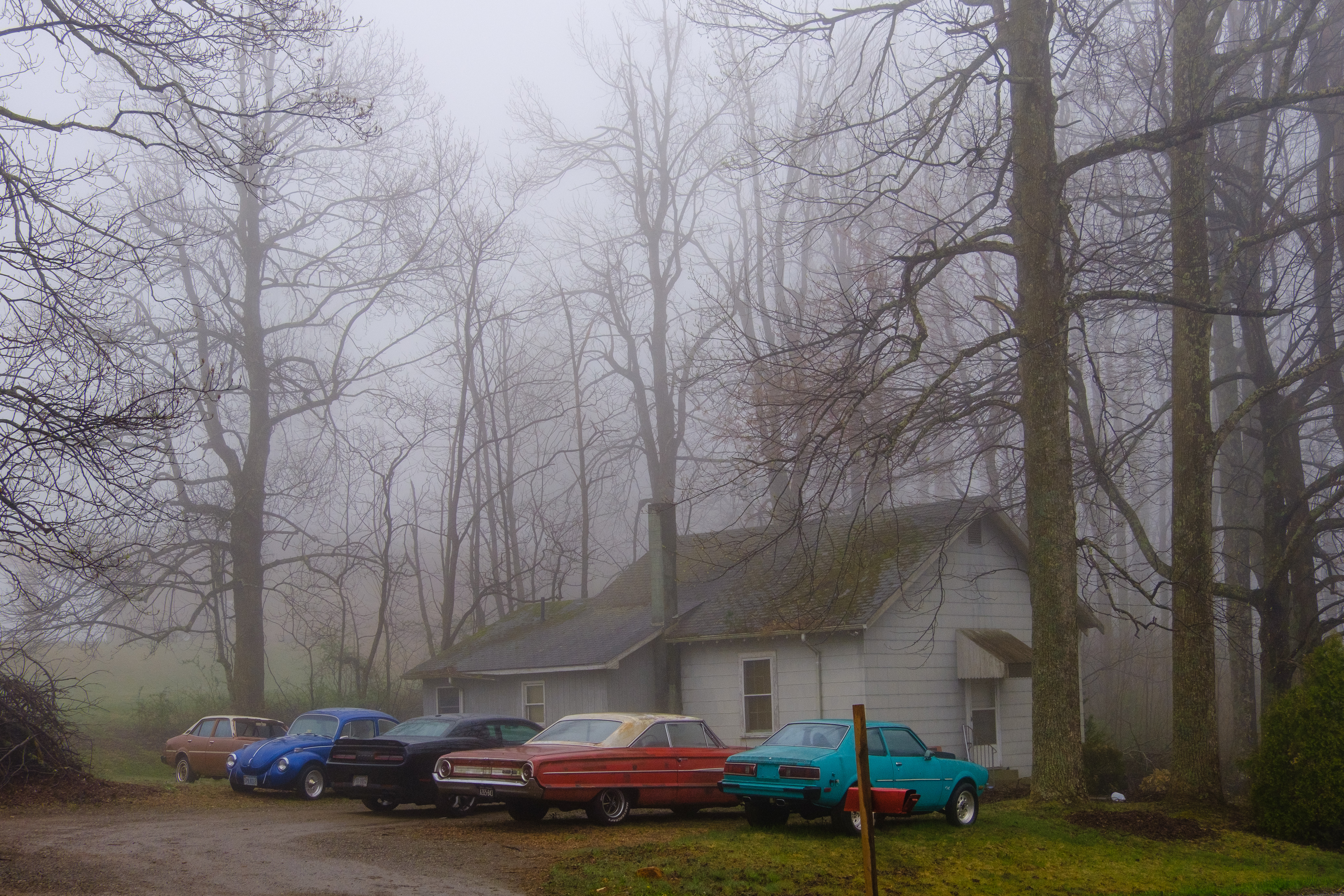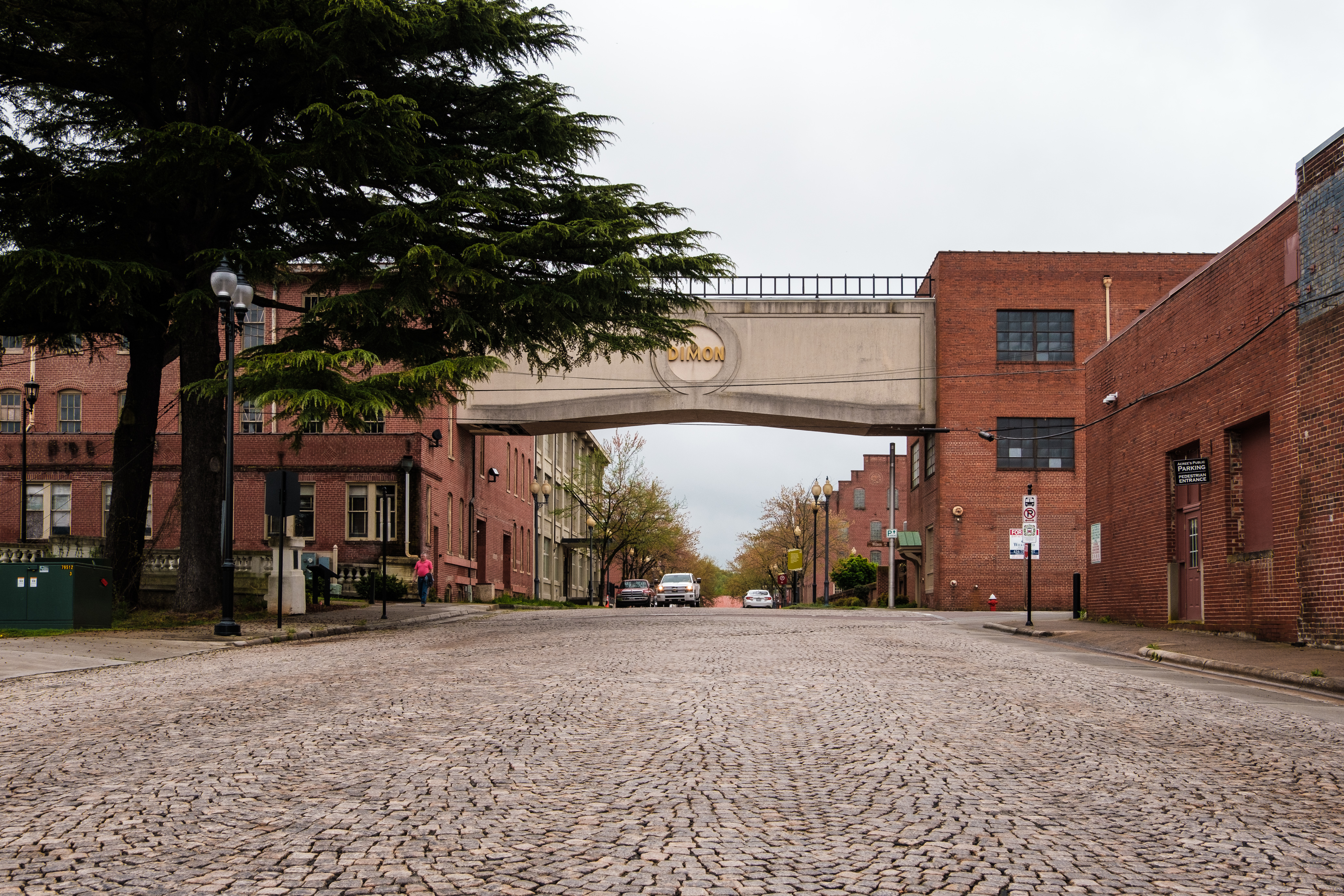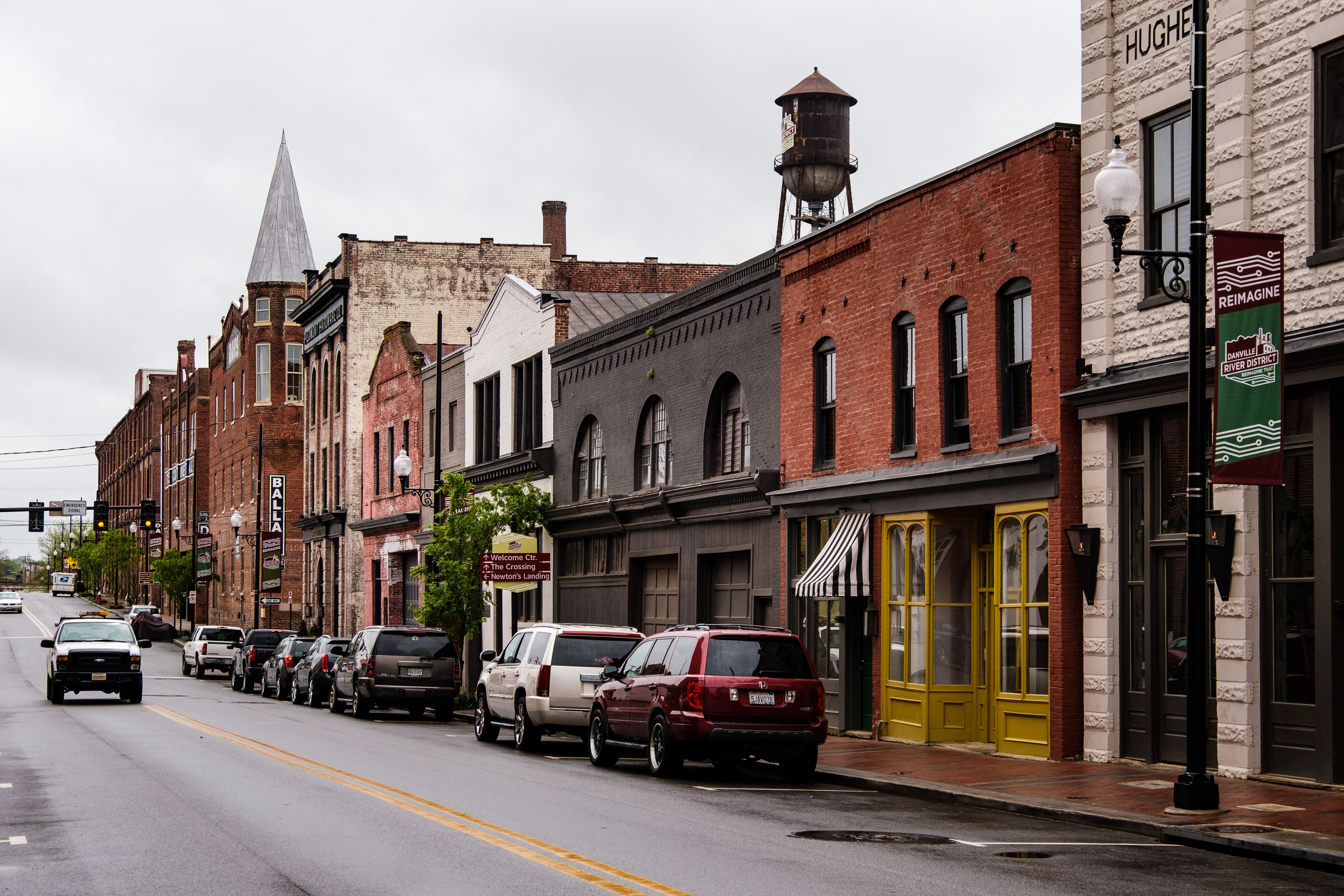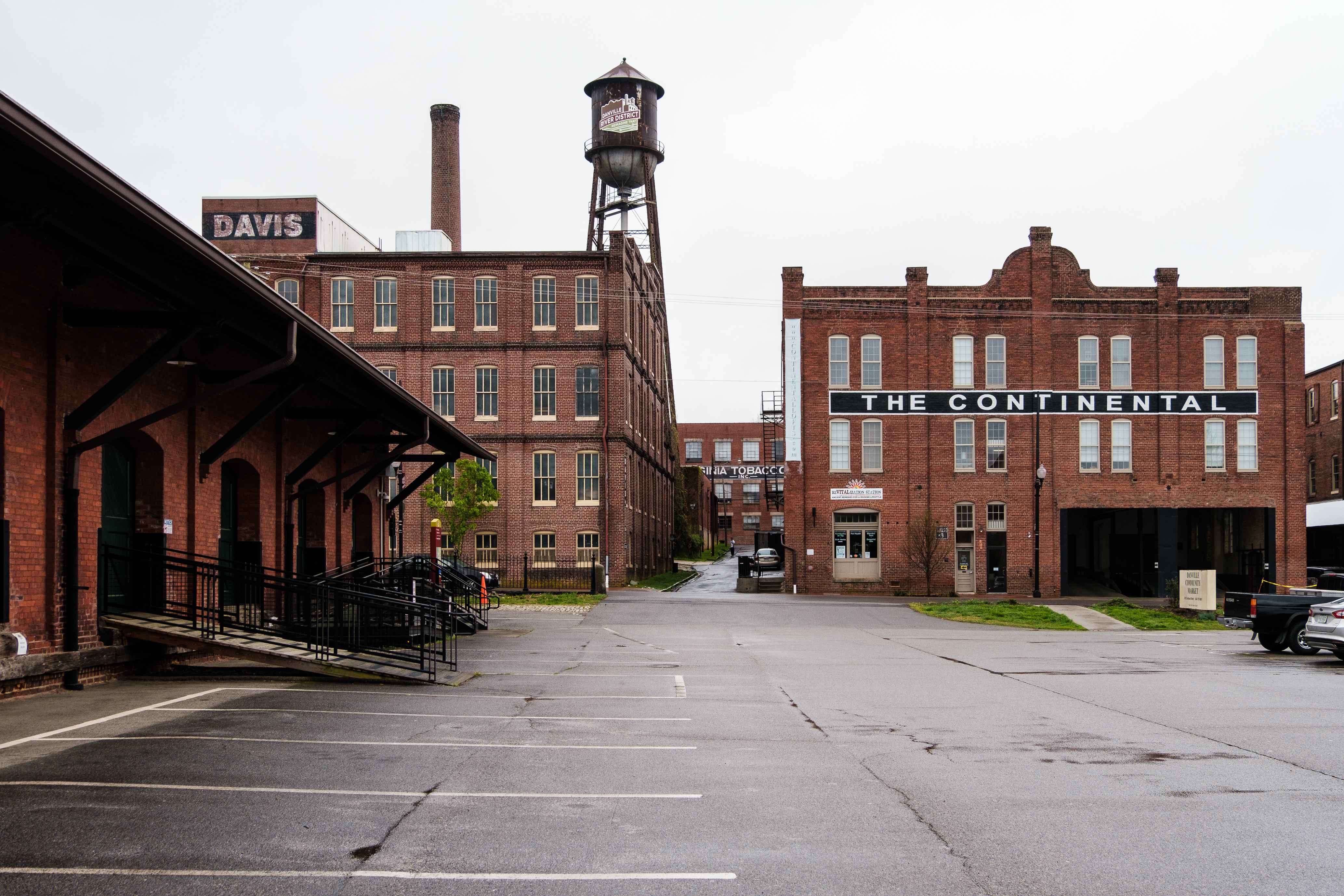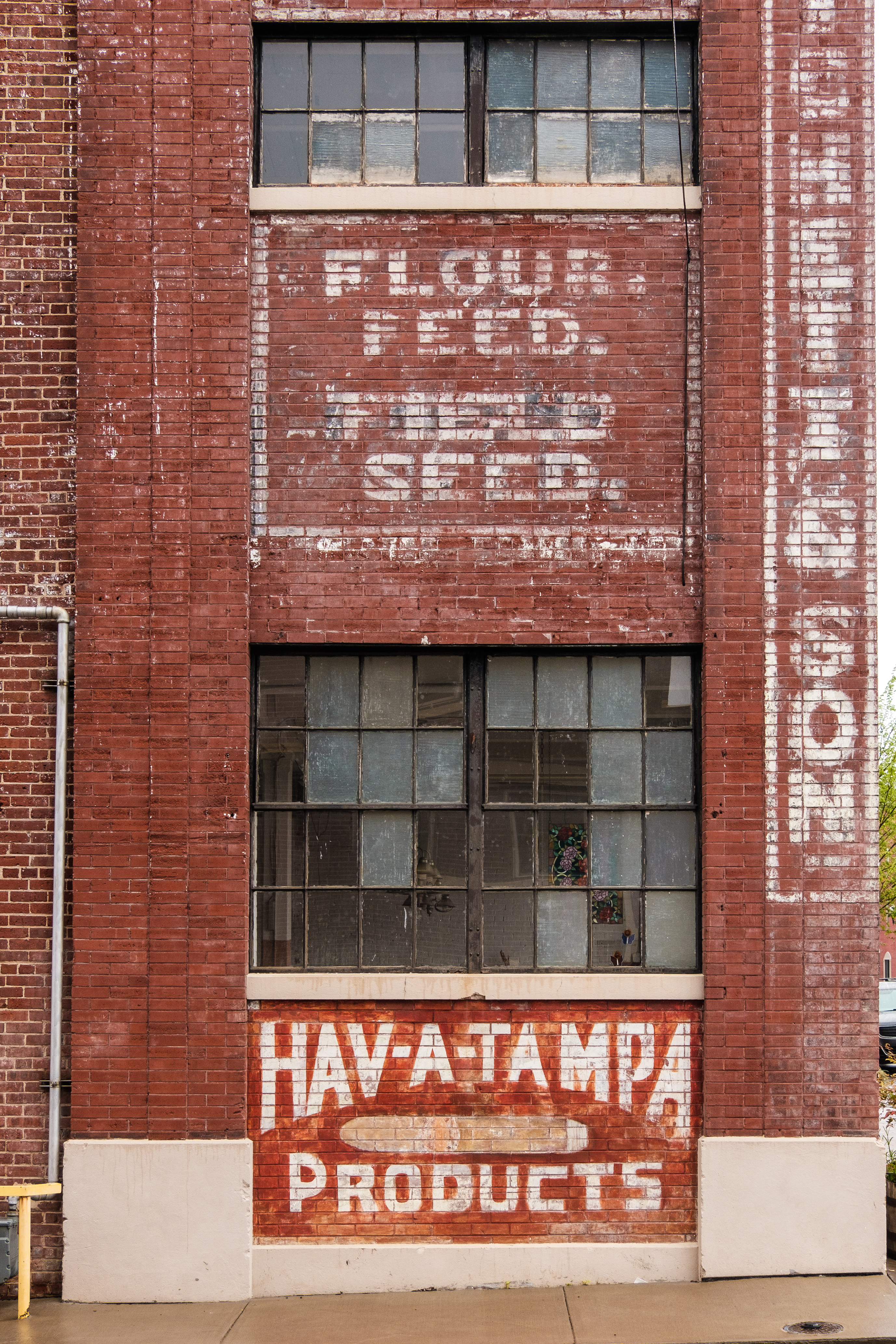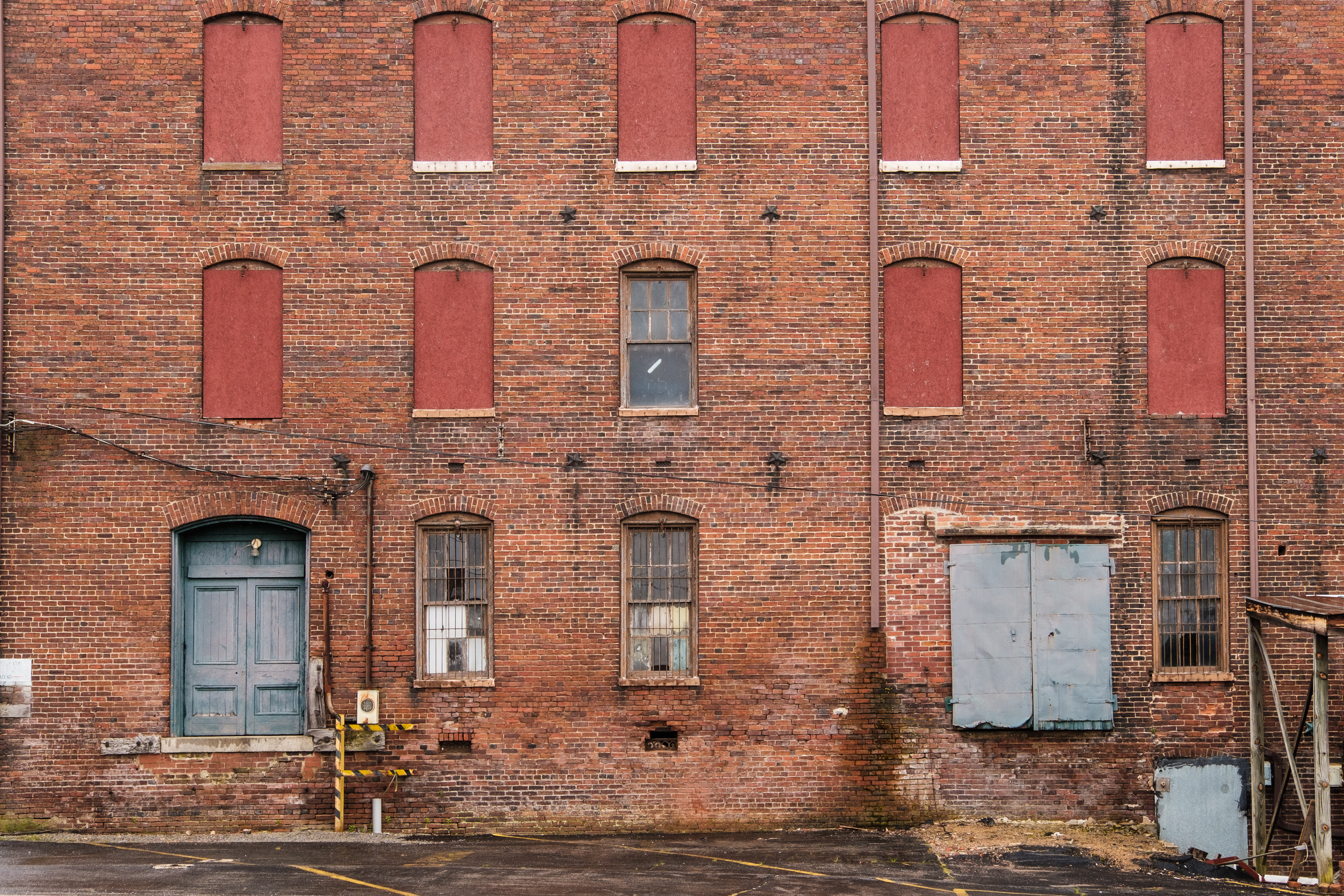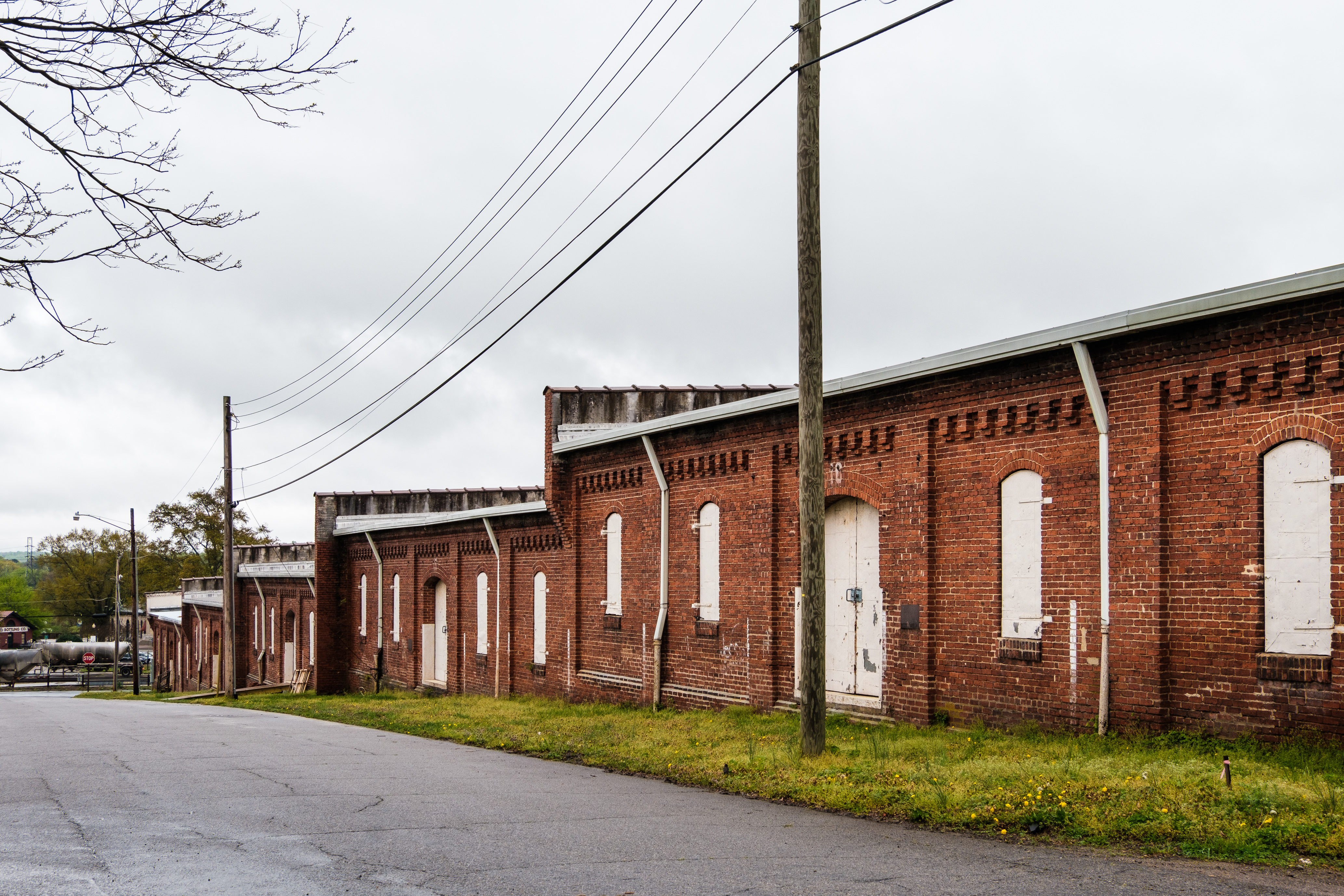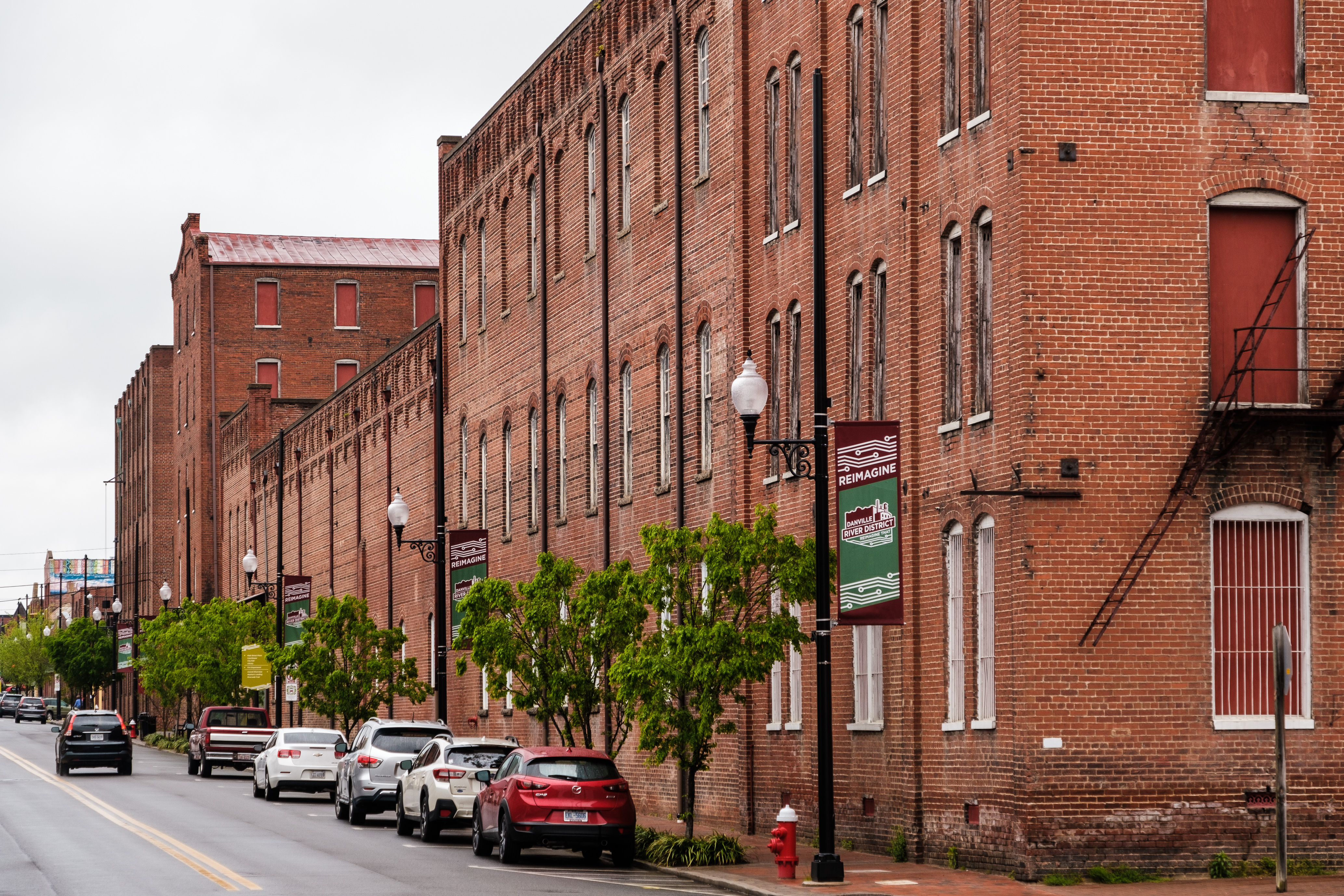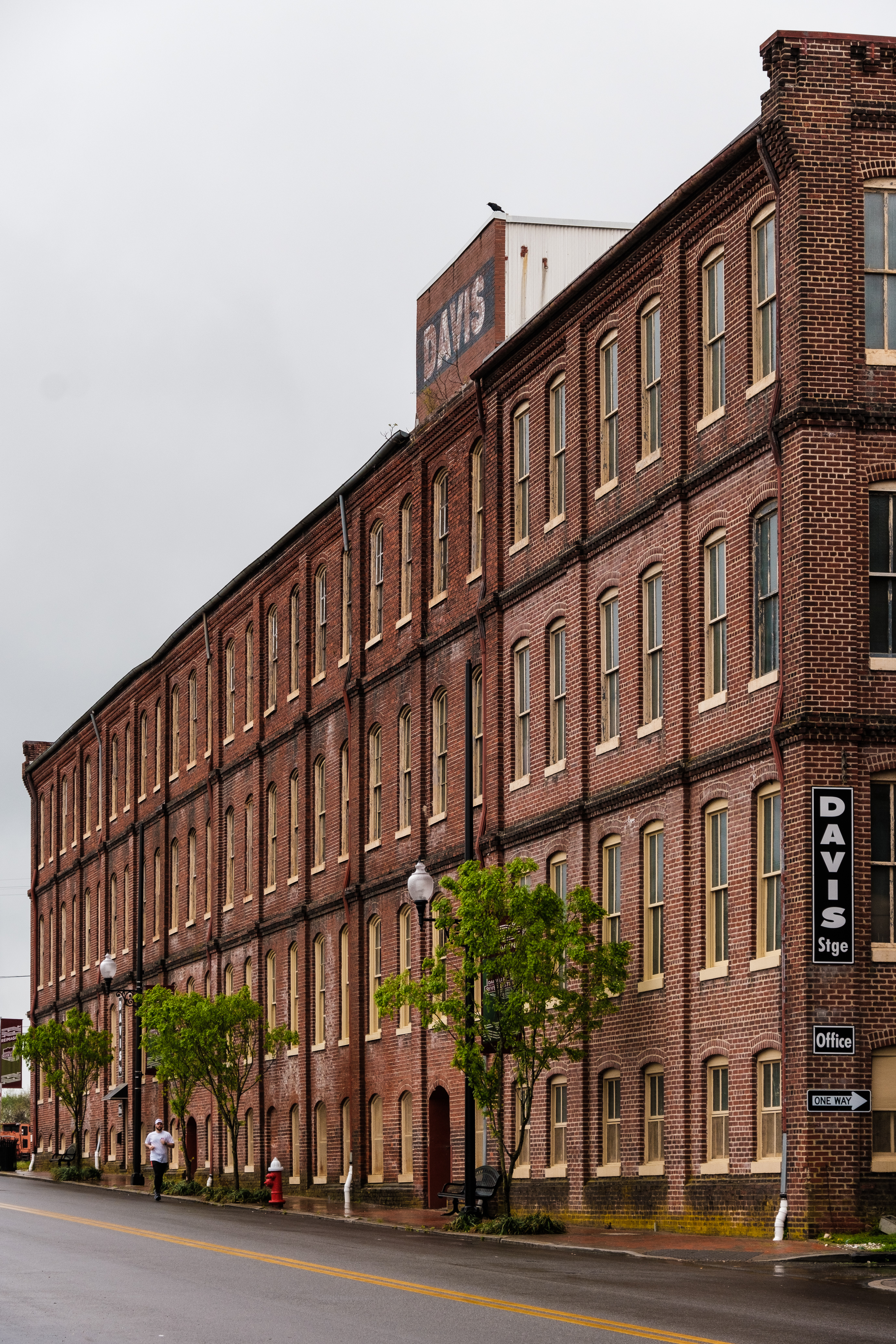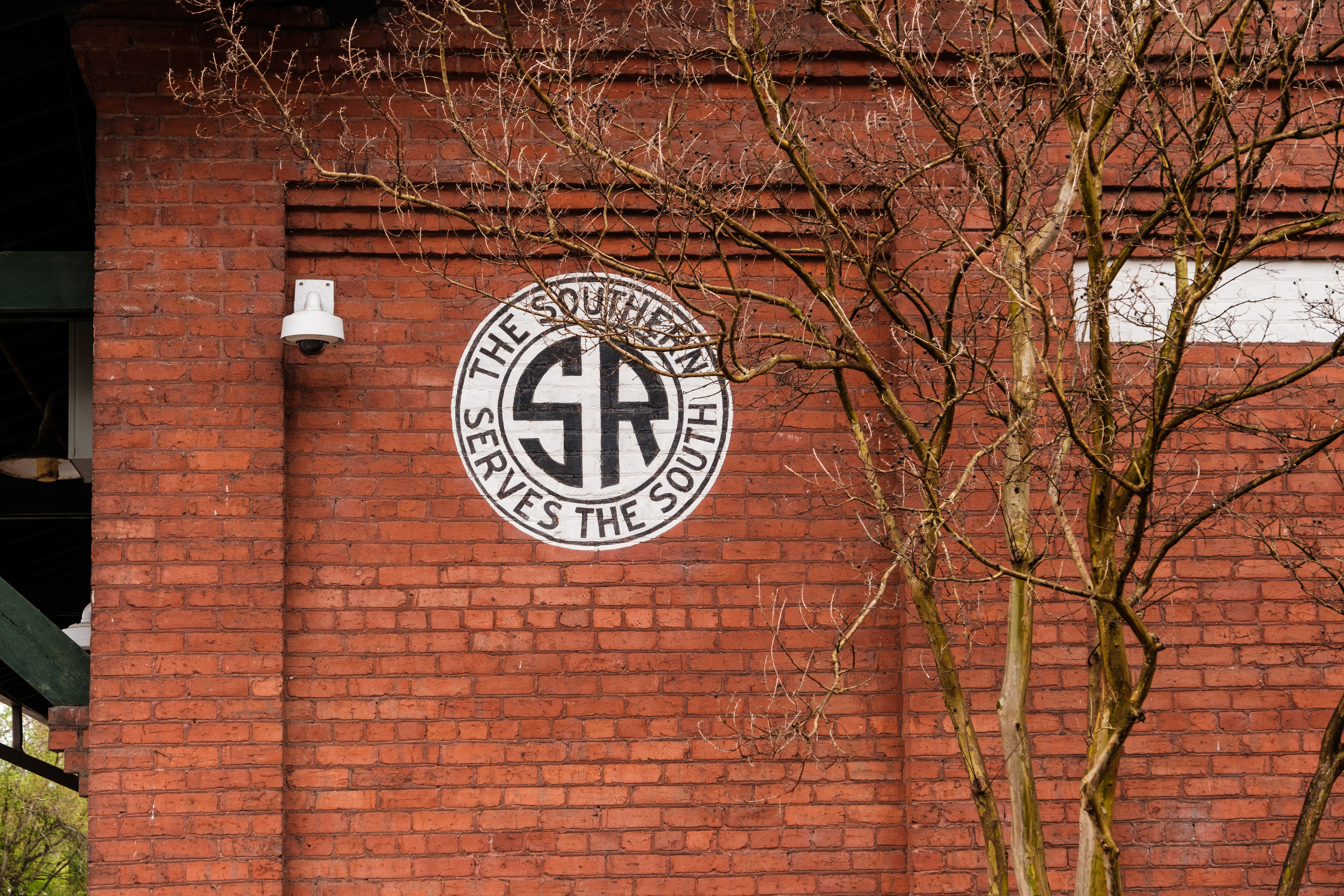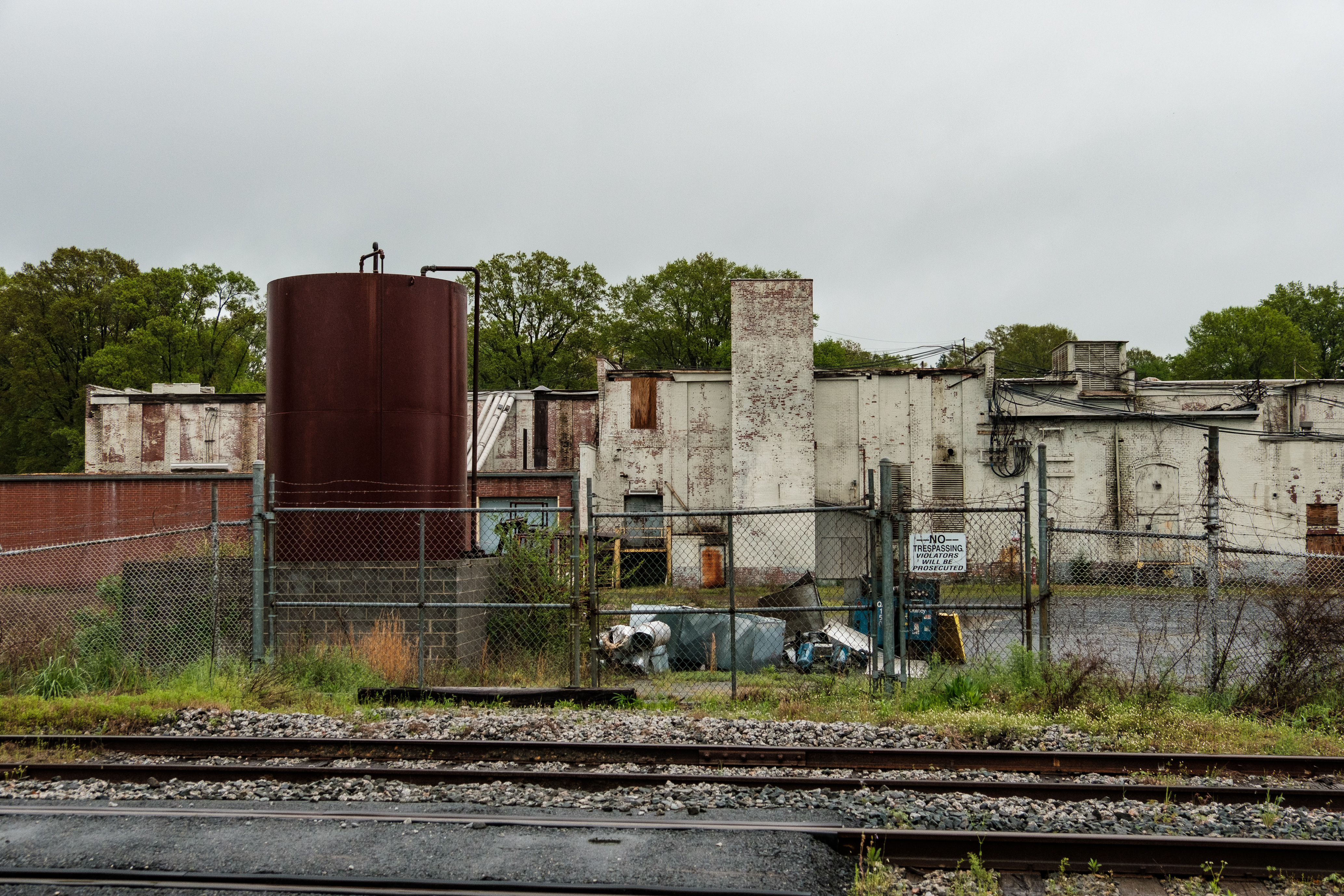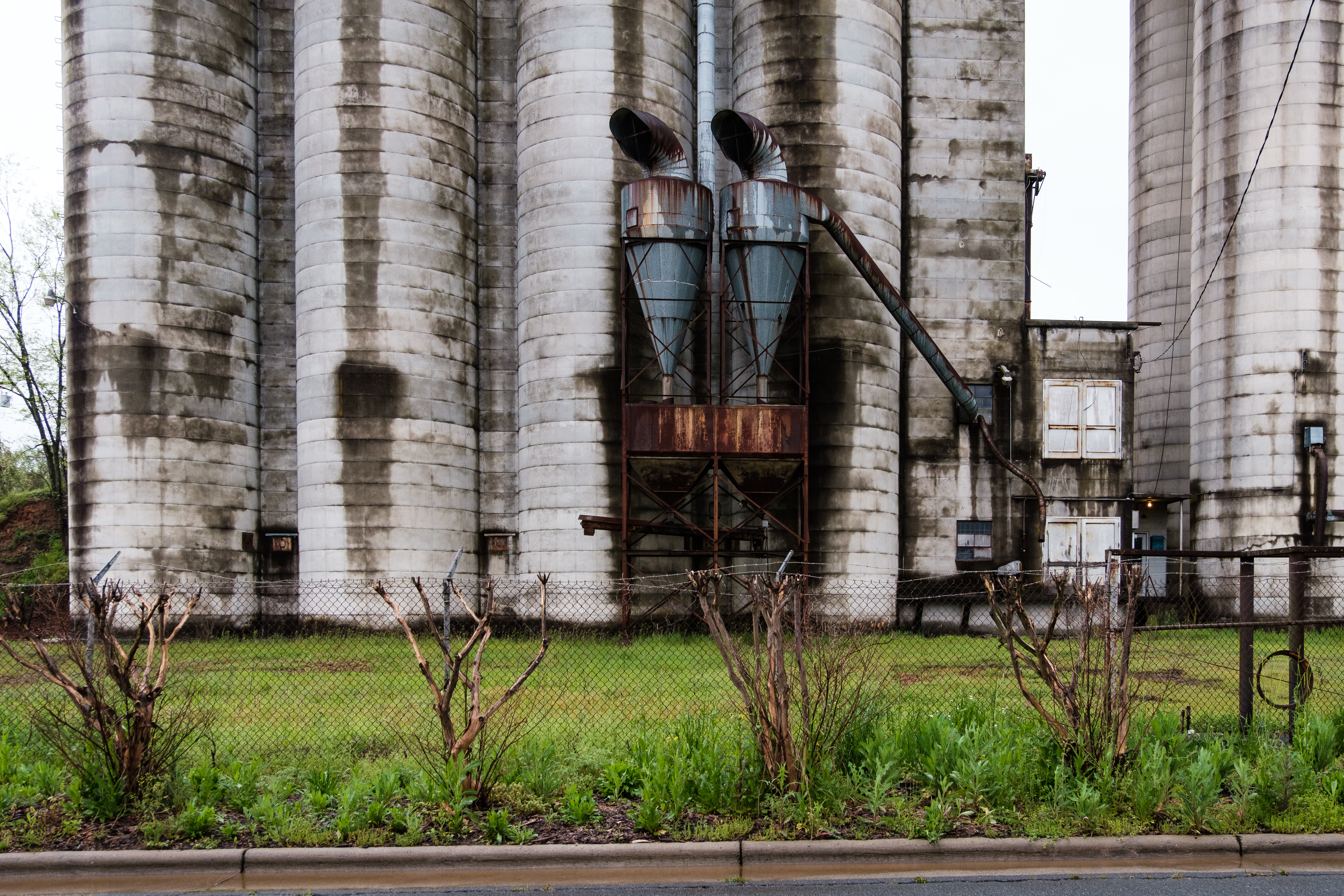The Blue Ridge Mountains to the Tobacco Country and the Carolinas
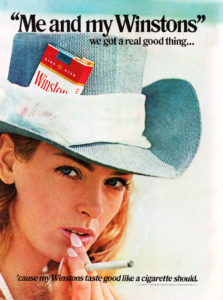 Our journey southward progresses. In the previous post we made it all the way to the northern end of the famed Blue Ridge Parkway where it starts up in Virginia. After a couple of hours on the Parkway (with numerous stops for the breathtaking views) I exited near Roanoke which is where we will start out in this post. It’s right off the Parkway and easy to get to from the drive.
Our journey southward progresses. In the previous post we made it all the way to the northern end of the famed Blue Ridge Parkway where it starts up in Virginia. After a couple of hours on the Parkway (with numerous stops for the breathtaking views) I exited near Roanoke which is where we will start out in this post. It’s right off the Parkway and easy to get to from the drive.
It’s no secret, I like trains. That made Roanoke a required stop. The Virginia Museum of Transportation there is one of the better rail museums I have ever been to, and it has a pretty decent collection of road vehicles as well. It’s housed in a 1918 vintage Norfolk & Western freight station right next to active Norfolk Southern mainline tracks in downtown Roanoke. It’s worth a visit if only to see the Norfolk & Western Class J-611 and the Class A-1218, two highly regarded modern steam locomotives which were built in Roanoke. In the photos, check out the deco era streamlining on the torpedo-nosed J class #611 – the only surviving locomotive of its type. What a beauty. Watch the video and see for yourself!
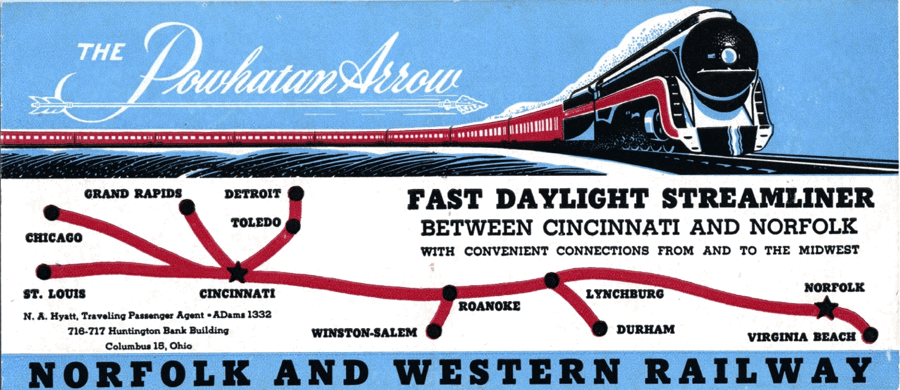
I didn’t spend a huge amount of time in Roanaoke (it was getting late in the day), and I missed what is supposed to be an excellent photography museum, the Winston Link Museum. I plan to get back on the Blue Ridge Parkway one of these years for the fall foliage, and I will try to check it out then.
 I did my overnight along the Parkway in Blacksburg to see Virginia Tech where my father did post-graduate work in chemistry. He had often mentioned his time there to us, and I wanted to see what it looked like. Truthfully, I had a hard time trying to picture what it would have been like there in the 1940s; it is a huge, mostly modern campus now that seems to be swallowing up the city. I mean, gigantic. Have you ever been to one of those American university campuses where there is seemingly no public parking? I couldn’t readily find any, so I gave up and headed out of Blacksburg to get back to the Blue Ridge Parkway. No VT photos in this set. I did manage to drive by a cluster of older buildings so I least had a view of them… the weather wasn’t exactly cooperating, and I wanted to stay in the car anyway.
I did my overnight along the Parkway in Blacksburg to see Virginia Tech where my father did post-graduate work in chemistry. He had often mentioned his time there to us, and I wanted to see what it looked like. Truthfully, I had a hard time trying to picture what it would have been like there in the 1940s; it is a huge, mostly modern campus now that seems to be swallowing up the city. I mean, gigantic. Have you ever been to one of those American university campuses where there is seemingly no public parking? I couldn’t readily find any, so I gave up and headed out of Blacksburg to get back to the Blue Ridge Parkway. No VT photos in this set. I did manage to drive by a cluster of older buildings so I least had a view of them… the weather wasn’t exactly cooperating, and I wanted to stay in the car anyway.
Driving in the morning drizzle (as you can see in the couple of photos after the Roanoke grouping) by the time I got back up in the Blue Ridge Mountains from the valley to the Parkway, it seemed like I was back in California driving along the Pacific coast in the fog. The visibility was not good. Not good at all. It was like Highway 1 back home on a very foggy day. Many of you reading this know what that is like. It was one of those days I was glad to be shooting with the water resistant Fujis.
I was determined to get to my destination before getting off the Parkway – the old Mabry Mill near Meadows of Dan which is a beautiful place to stop. I read in my guidebook that it gets pretty crowded with visitors, but on that particular April morning in the mist, for a time I was the only one there. During my stop only one or two cars pulled up. That was it. Miraculously, the rain eased up and the mist cleared a bit while I was there, and I was able to get some shots of the old mill. Trust me, I was not the first to take that photo in this set (nor will I be the last). It’s a classic view.
Both on the ascent to the Parkway from Blacksburg and the descent to the foothills and the Piedmont later on, the drive had an other-worldly feel to it. Appalachia.
 My first stop after the Parkway was Danville, Virginia, where there is a big tobacco warehouse district. It’s very close to the North Carolina state line. The city was once an important tobacco processing center. It was a great stop. The warehouse district is in the middle of a huge makeover. I love it when these historic places get saved. At one time Danville was the location of one of the South’s primary tobacco markets but no more. My destination for my next overnight was Winston-Salem, North Carolina. One of the biggest tobacco companies, R. J. Reynolds, is still based there (now owned by the UK’s British American Tobacco). Yup, we are in tobacco country. I see the name of the city and think of cigarette brands. “Winston takes good, like a cigarette should” – that was a jingle in an ad for Winston cigarettes many years ago. In America, it used to be that cigarette advertising was pervasive. I remember that Winston jingle well and can still hum its tune. Salem had “natural menthol”. (I don’t smoke.)
My first stop after the Parkway was Danville, Virginia, where there is a big tobacco warehouse district. It’s very close to the North Carolina state line. The city was once an important tobacco processing center. It was a great stop. The warehouse district is in the middle of a huge makeover. I love it when these historic places get saved. At one time Danville was the location of one of the South’s primary tobacco markets but no more. My destination for my next overnight was Winston-Salem, North Carolina. One of the biggest tobacco companies, R. J. Reynolds, is still based there (now owned by the UK’s British American Tobacco). Yup, we are in tobacco country. I see the name of the city and think of cigarette brands. “Winston takes good, like a cigarette should” – that was a jingle in an ad for Winston cigarettes many years ago. In America, it used to be that cigarette advertising was pervasive. I remember that Winston jingle well and can still hum its tune. Salem had “natural menthol”. (I don’t smoke.)
Tobacco still is an important agricultural crop in Virginia and North Carolina. Here’s something I found which gets into a fair amount of detail about Virginia’s tobacco industry for those who are interested.
I found this shorter article about North Carolina which talks about how some growers are transitioning to other crops.
From what I read the tobacco farming still seems to be going strong in both states (even if not what it once was). I didn’t see a lot of fields on my drive, but even so that I was in tobacco country was hard to overlook. I started to see a lot of old tobacco barns for one thing. Many are derelict now. There’s an organization I read about which is promoting the preservation of the old barns.
After I crossed over into North Carolina I made a point to stop off in Greensboro before arriving in neighboring Winston-Salem. There are a couple of very important US civil rights sites in Greensboro. The International Civil Rights Center & Museum is located at the former Woolworth’s downtown Greensboro store which was where on Feb. 1, 1960, four North Carolina A&T State University students — Franklin McCain, Joseph McNeill, Ezell Blair, Jr. (now known as Jibreel Khazan) and David Richmond — courageously sat down at the segregated Woolworth’s lunch counter and, as I understand it, thereby launched the “sit-in” movement that would be an important part of the civil rights struggle throughout the US South. Read more about the US Civil Rights Trail in Greensboro here.
After Winston-Salem the final stop in this set will be in Albemarle, Stanly County, in the North Carolina Piedmont. It was the first of many places I would see in North and South Carolina dotted with derelict factories. Abandoned America. The main street (high street) in Albemarle seemed to be hanging in there (unlike quite a few other cities and towns I drove through in the Carolinas), however; it was a good visit.
I didn’t expect to see so much economic decline in the Carolinas away from the thriving regions we hear about. Sure, I had heard that some of the traditional industries and agriculture were challenged, but I didn’t expect to see as much as I did. So I did a little reading. The textile industry was once an essential part of North Carolina’s economy. According to what I have read it has experienced a pretty significant decline over the last 20-30 years with many business closures and relocation of production offshore, although the industry is still there albeit on a very different footing now. The state has lost much of its furniture manufacturing as well. Generally, it’s been a steady 20-30 years of challenges for the older manufacturing industries in the state, and that shows on a drive like this away from the interstates (motorways) and through so many older towns and cities. The agricultural economy has been changing, too. All this has meant job losses. Sometimes big job losses. From what I have read there is certainly other job creation but there is inevitable dislocation as the economy transitions and changes.
As with my journeys through the US “Rust Belt” in the Northeast of the country (i.e. upstate New York, parts of New Jersey, Pennsylvania, Ohio, Illinois, Indiana and Michigan), the industrial transformation and rural depopulation in the Carolinas make for some powerful images. I didn’t see so much of this in Virginia, but in North and South Carolina there are many places with closed factories and depopulated neighborhoods; sometimes it can be a little dystopian as it is in the Rust Belt.
Mind you, there are many thriving cities and regions in the Carolinas. The area around Charleston, South Carolina, comes to mind; so do Charlotte and the Raleigh–Durham–Chapel Hill area in North Carolina. I remember in my legal career when I started working with banks in Charlotte rather than traditional money centers like New York, San Francisco and Chicago. There’s been much economic growth there, too.
Still, these are profound economic changes taking place in the Carolinas. I saw it on this drive. I am minded to do a black and white set in one of these posts so you can see for yourselves more of what I saw with the added poignancy one gets with black and white.
Here are the photos. Click on (or tap) an image to expand it (and use the arrow to the right on an expanded image to go through the set, if preferred over scrolling down in the post).
See you next time for some more pix of the drive southward in North and South Carolina as I get closer to my friends’ place in Summerville, South Carolina, and nearby Charleston.
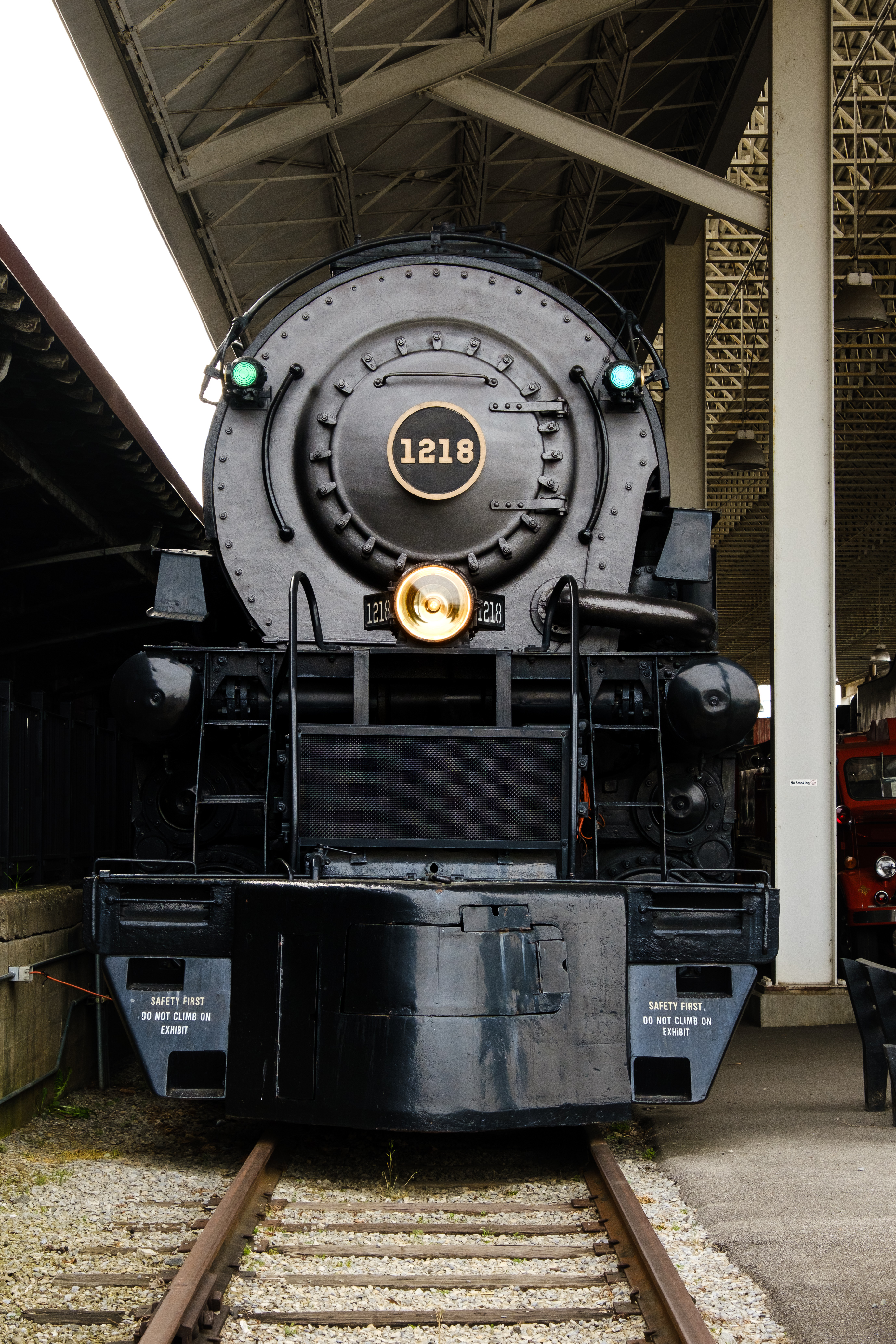
Norfolk and Western Class A, 1943 (production era 1930s – 1950s), Virginia Museum of Transportation, Roanoke
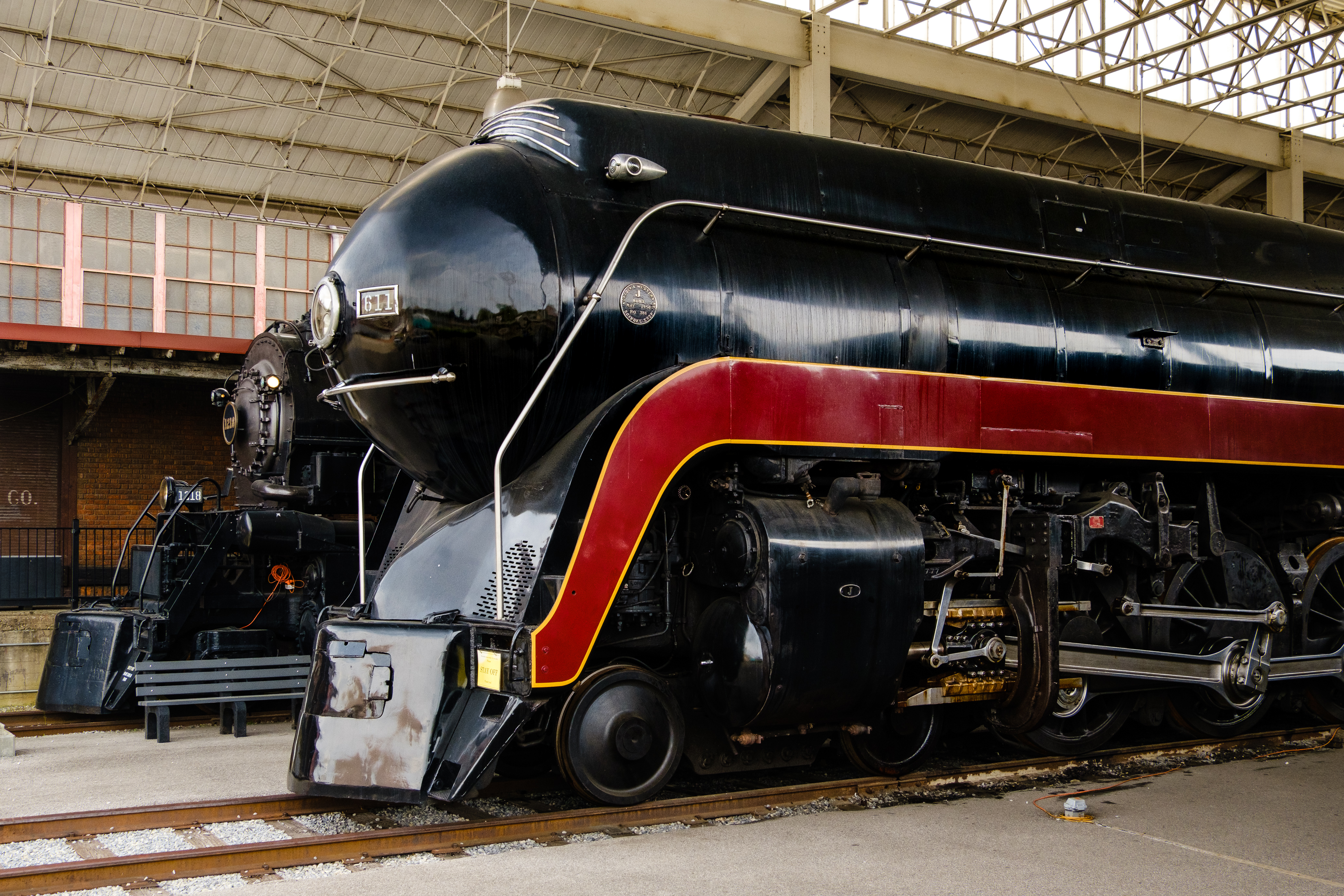
Norfolk & Western Class J #611 steam locomotive, 1950 (production era: 1941-1950), with a Norfolk and Western Class A, 1943, in the background, Virginia Museum of Transportation, Roanoke
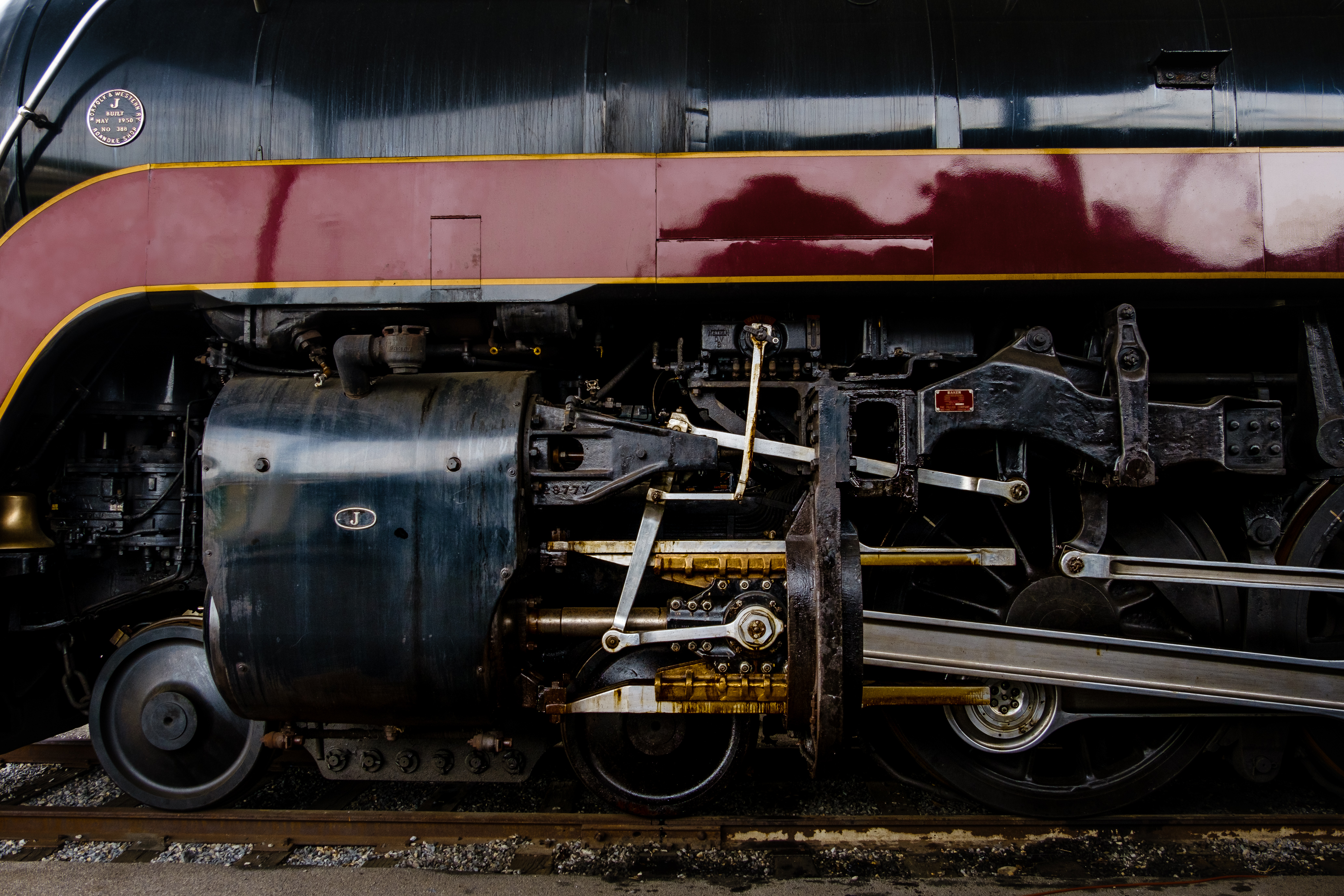
Norfolk & Western Class J #611 steam locomotive, 1950 (production era: 1941-1950), Virginia Museum of Transportation, Roanoke

Norfolk & Western Class J #611 steam locomotive (production era: 1941-1950), Virginia Museum of Transportation, Roanoke
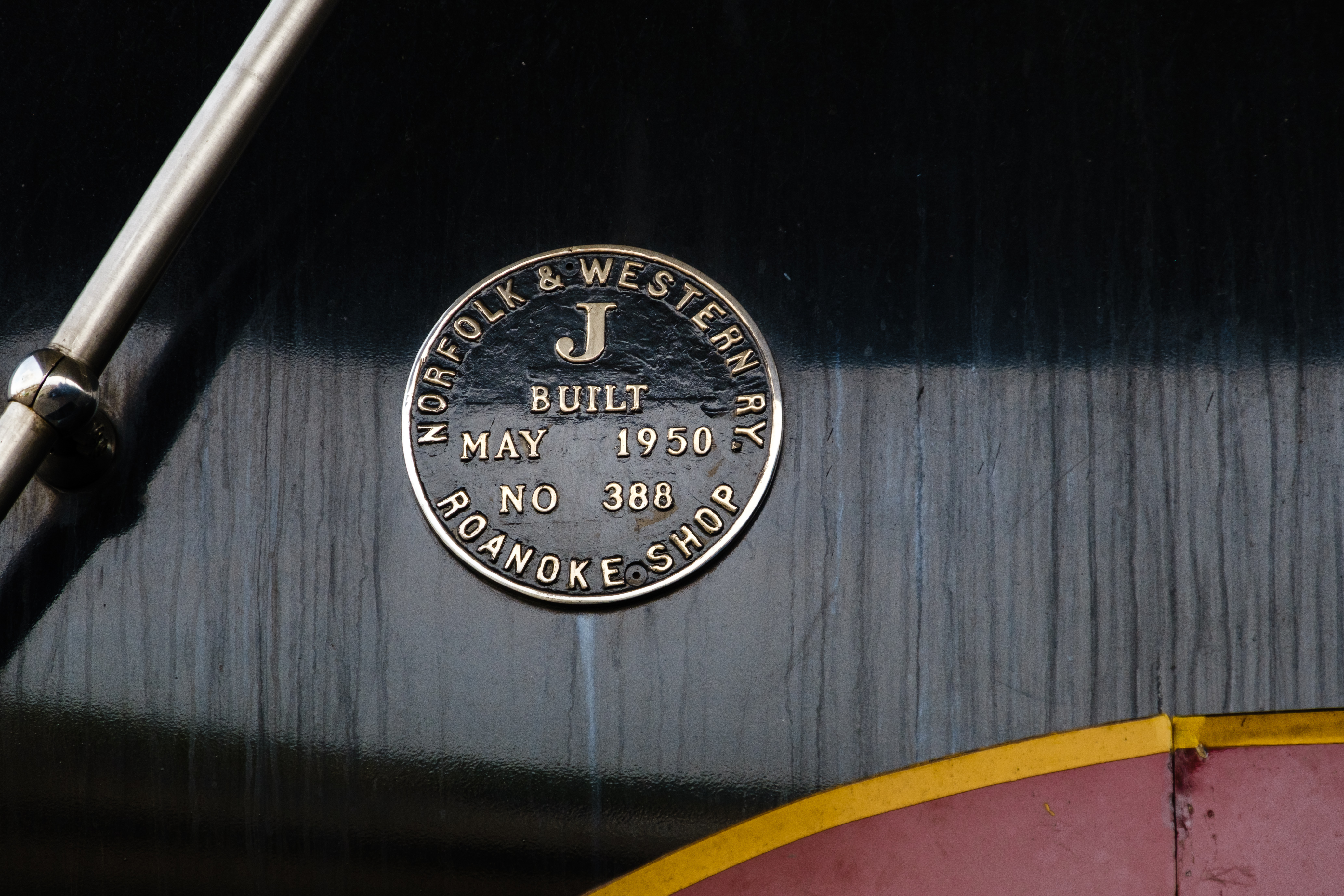
Norfolk & Western Class J #611 steam locomotive, 1950 (production era: 1941-1950), Virginia Museum of Transportation, Roanoke
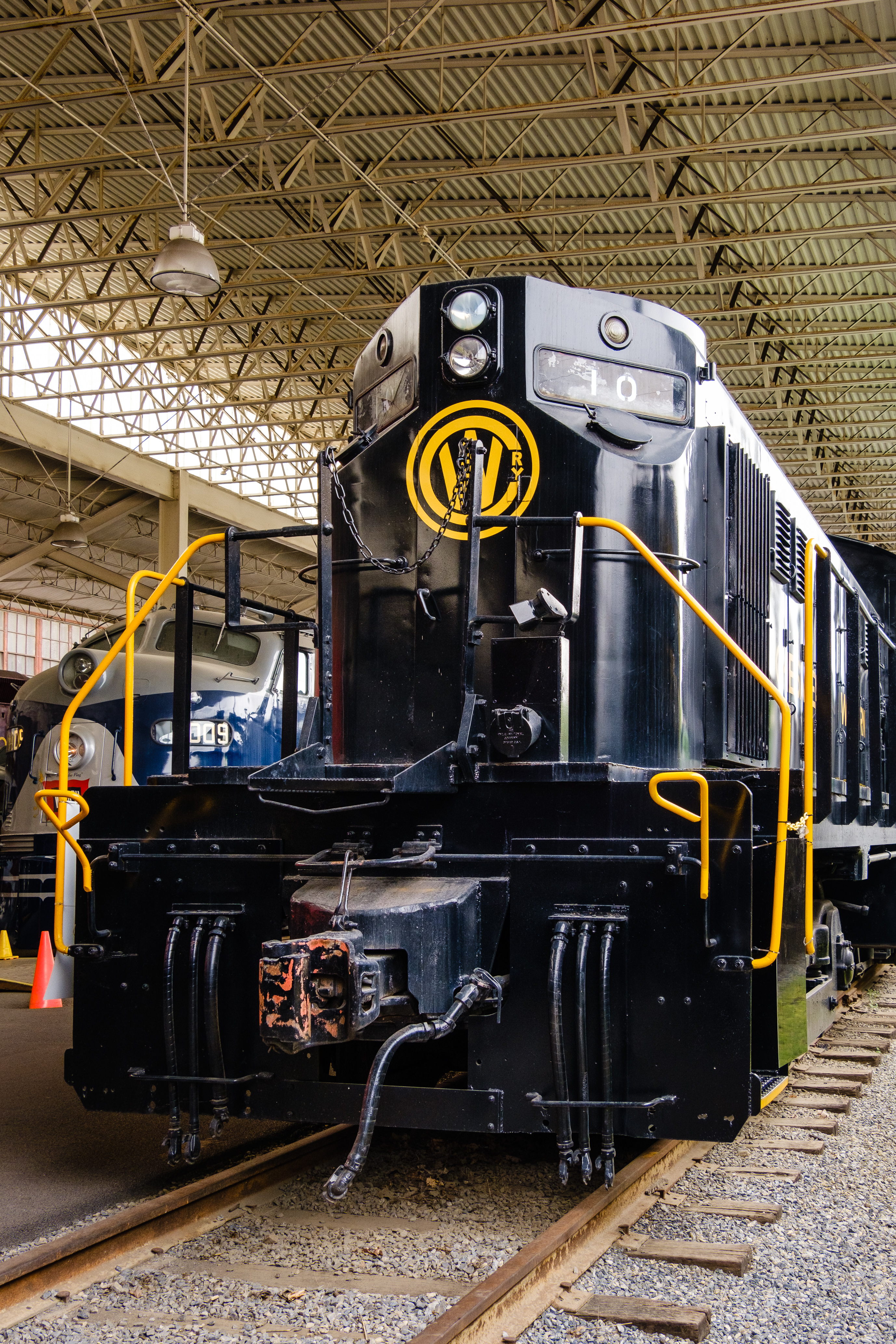
Chesapeake Western Alco T-6 Switcher #10 diesel-electric locomotove, 1959 (production era: 1958 – 1969), Virginia Museum of Transportation, Roanoke
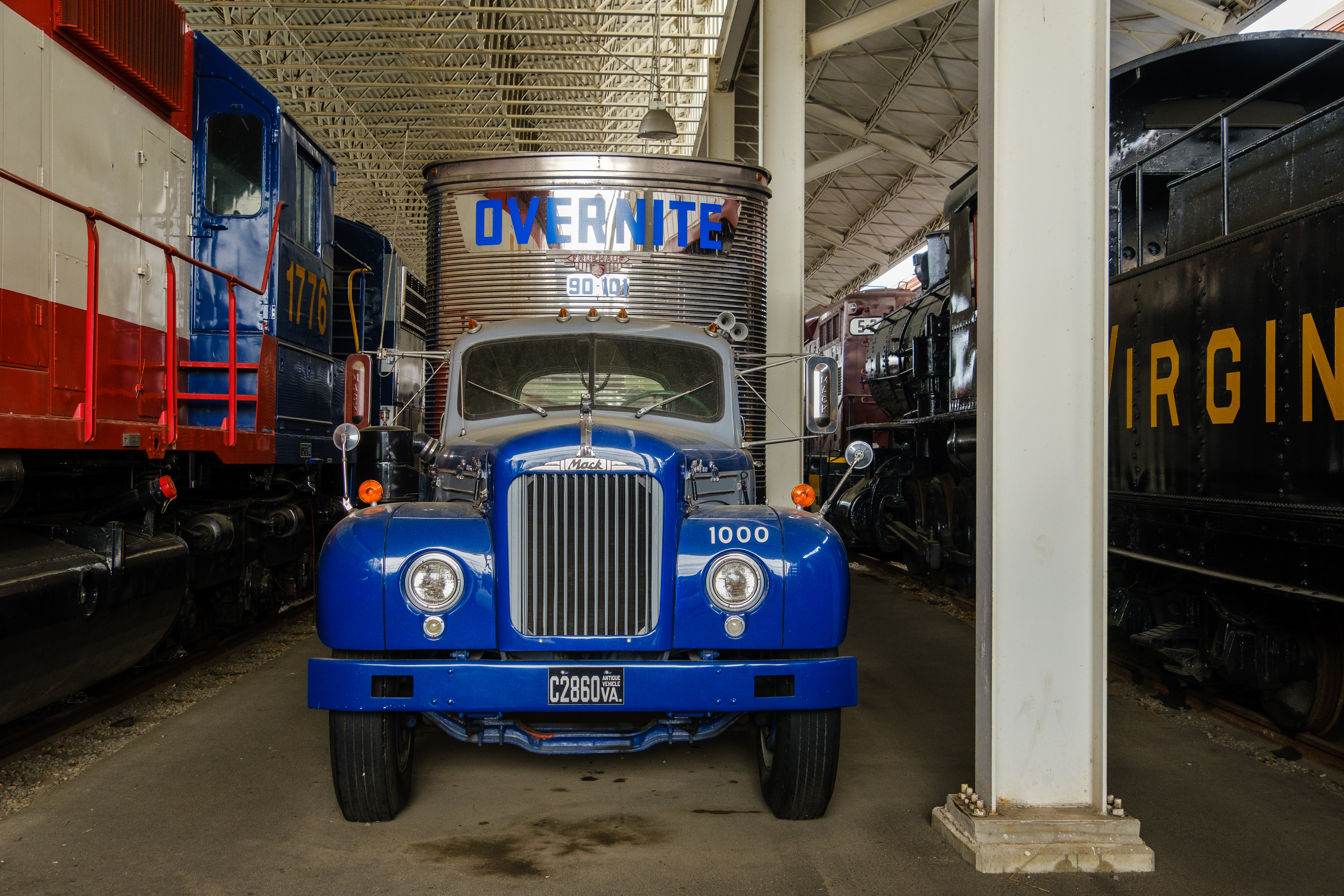
Overnite 1960 Mack B model cab 1 and a 1947 stainless Fruehauf steel trailer, Virginia Museum of Transportation, Roanoke

On the US Civil Rights Trail. "Greensboro Four’" statue at the Dudley Memorial Building, North Carolina A&T State University, Greensboro, North Carolina

On the US Civil Rights Trail. "Greensboro Four’" statue at the Dudley Memorial Building, North Carolina A&T State University, Greensboro, North Carolina

On the US Civil Rights Trail. Former Woolworth's, now the International Civil Rights Center & Museum, Greensboro, North Carolina
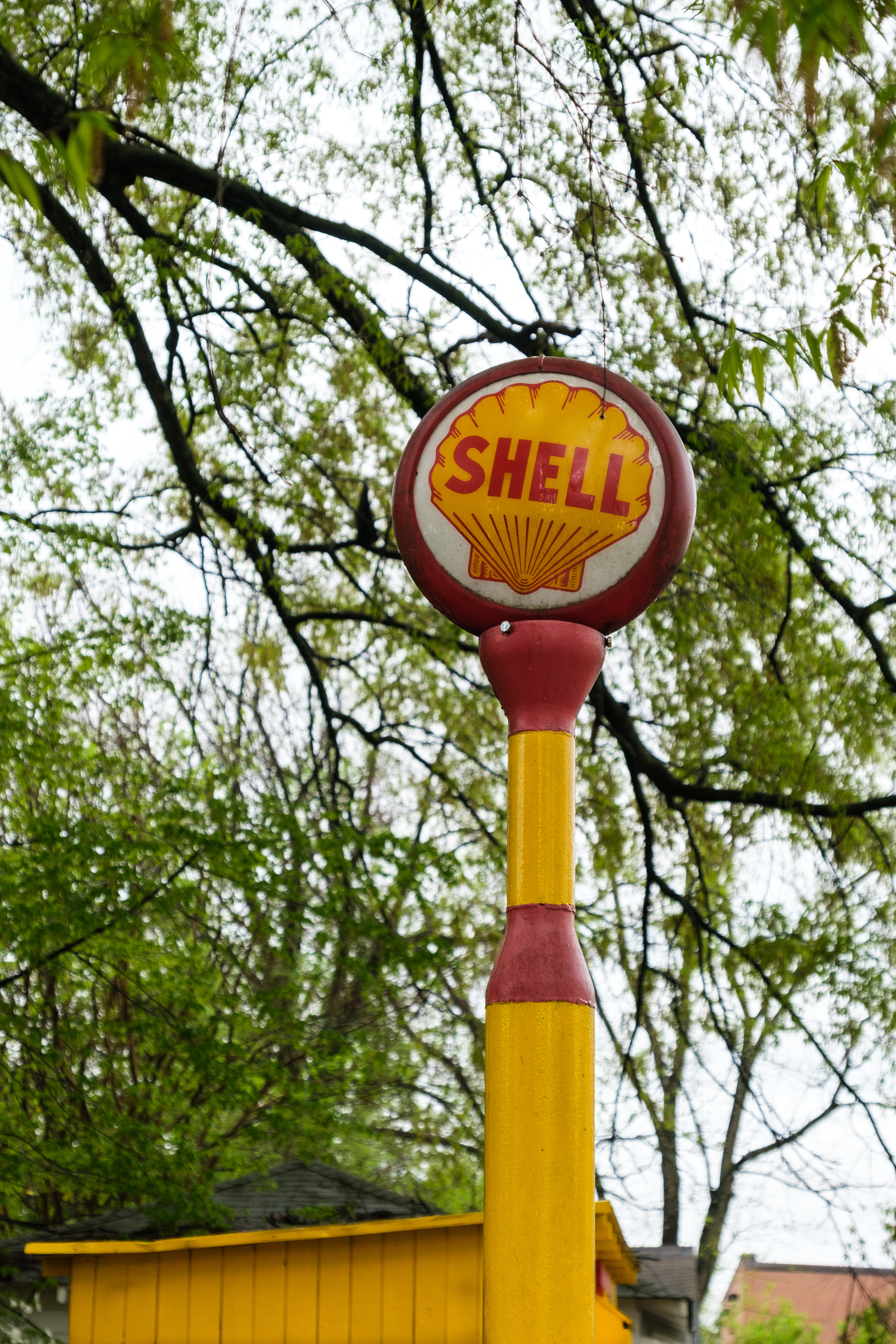
Former Shell Oil clamshell station (1930), Sprague and Peachtree Sts., NW, Winston-Salem, North Carolina

Former Shell Oil clamshell station (1930), Sprague and Peachtree Sts., NW, Winston-Salem, North Carolina

In the Piedmont. Repurposed Pontiac dealership in downtown Albemarle, Stanly County, North Carolina.

